
2024 Bike Summer season kicked off in fine fashion today. At one point at the start of the ride I stood near the western entrance to the Broadway Bridge at the corner of NW Lovejoy and Broadway. I looked down the ramp toward Burnside and all I could see were people on bicycles across the entire width of the street as far as my eyes could see (photo above). One corker I talked to said they stood and watched the pedaling mass roll by for 35 minutes he was probably near the middle of the pack!
As I biked from my house near Peninsula Park to the meet-up spot at the North Park Blocks it felt like the opening to the classic film, The Warriors, when all the gangs from New York posse-up and descend on the city for a big rumble. The city’s bike lanes were like tributaries to a mighty river of bikes. The Kickoff Ride has always been a true gathering of the tribes, and as Portland’s bike scene has broadened and diversified over the years, the gathering has grown along with it.
Bike Summer (formerly known as Pedalpalooza) is a three-month festival of pedaling and free fun unlike anything in the world. It began in 2002 as a traveling festival with a few dozen rides. The next year, locals did it again and it’s happened every year since, becoming one of Portland’s most important cultural institutions.
As the first major ride of Bike Summer on the first day of the festival, there’s always a great sense of optimism and energy at Kickoff. This year’s ride started at the North Park Blocks, where riders were treated to a pre-ride party that included a drag show, great food, a DJ, and a live music send-off from Portland Samba. The route went across the Broadway Bridge, up NE Weidler, and then through Lloyd District to southeast via the Blumenauer Bridge and ended up at Laurelhurst Park.
Below are some of my favorite photos. I got some fun video clips and I can’t wait to share them. Stay tuned for that.
Hope you had a great ride.


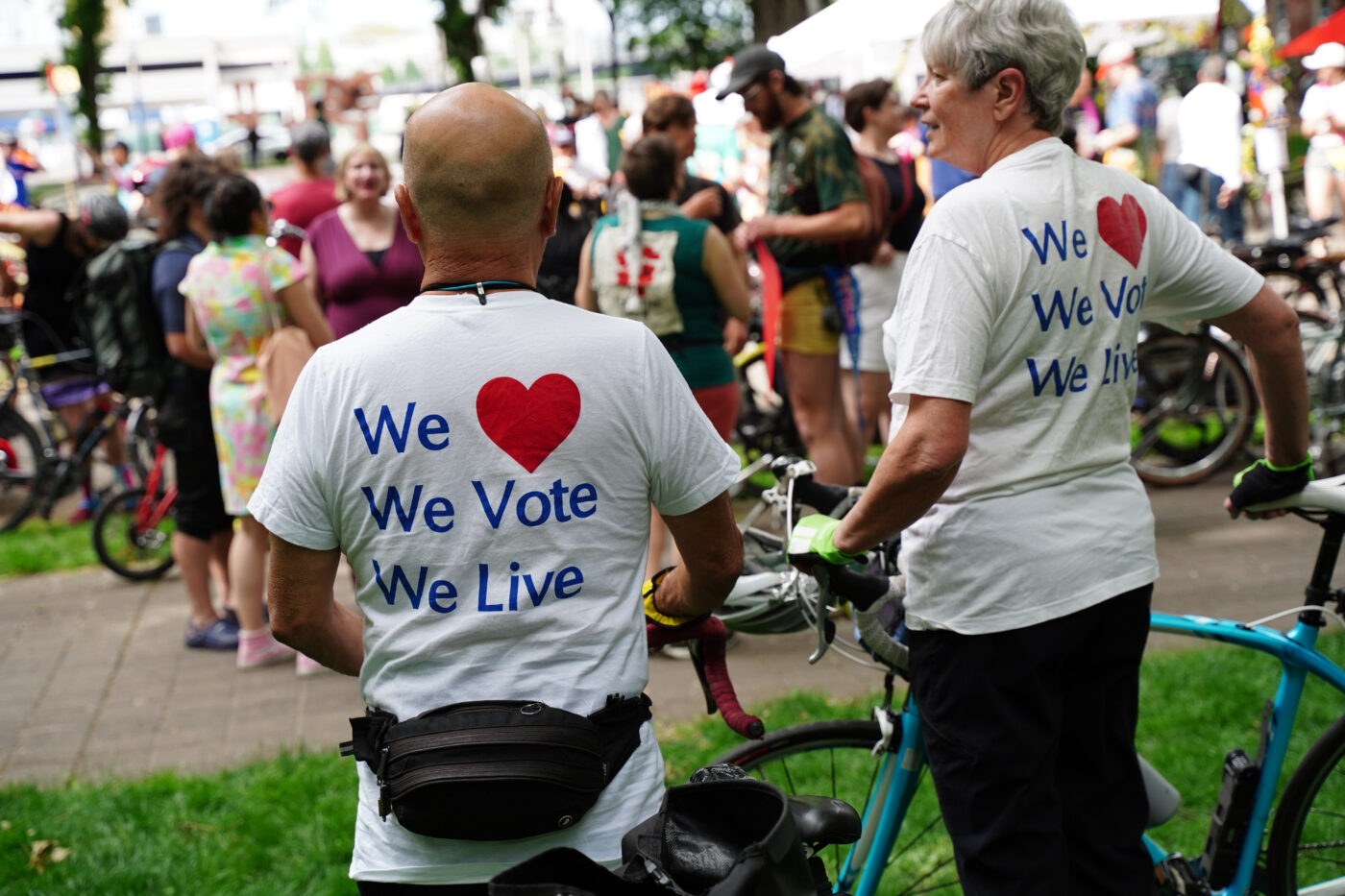




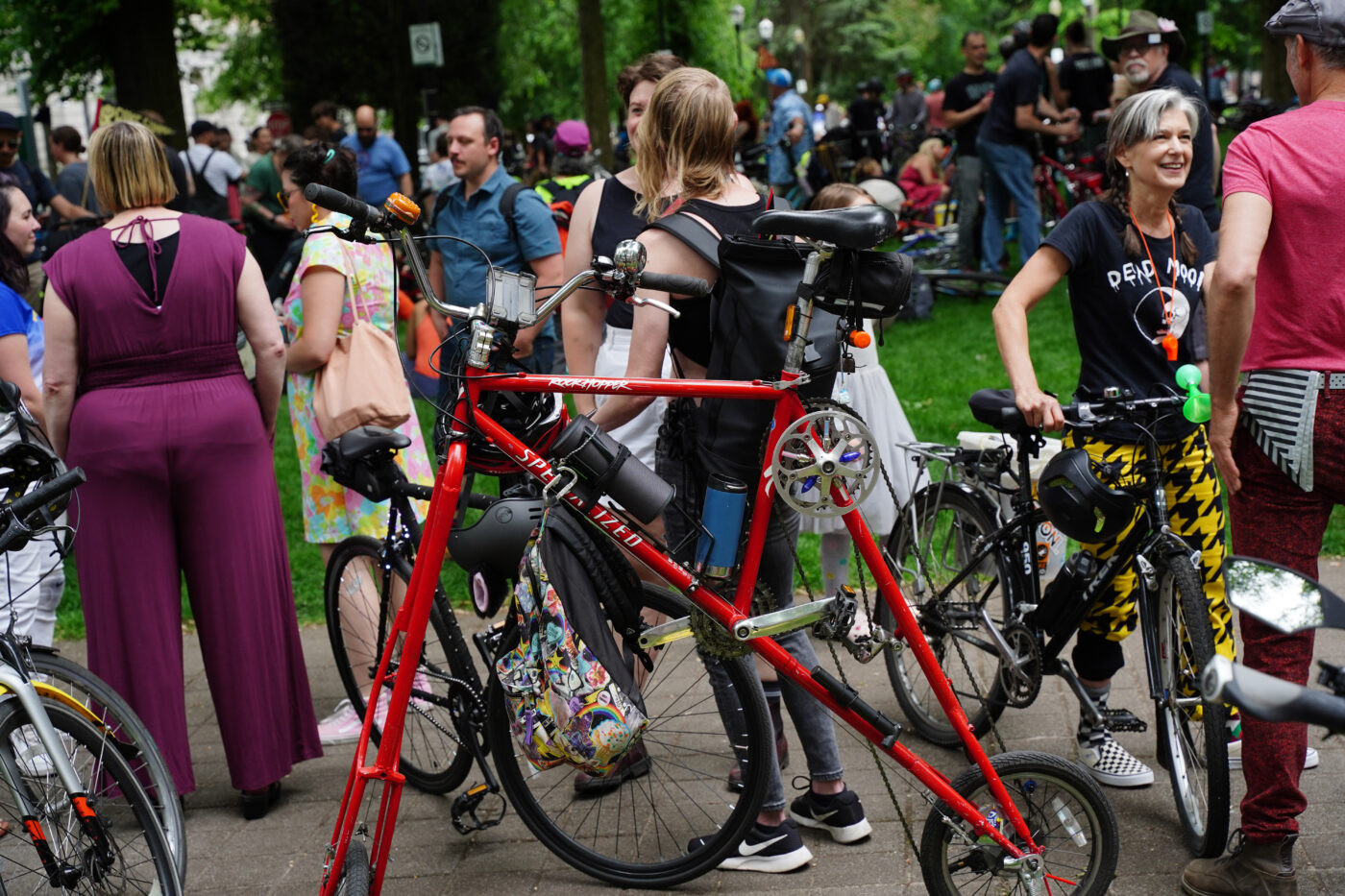

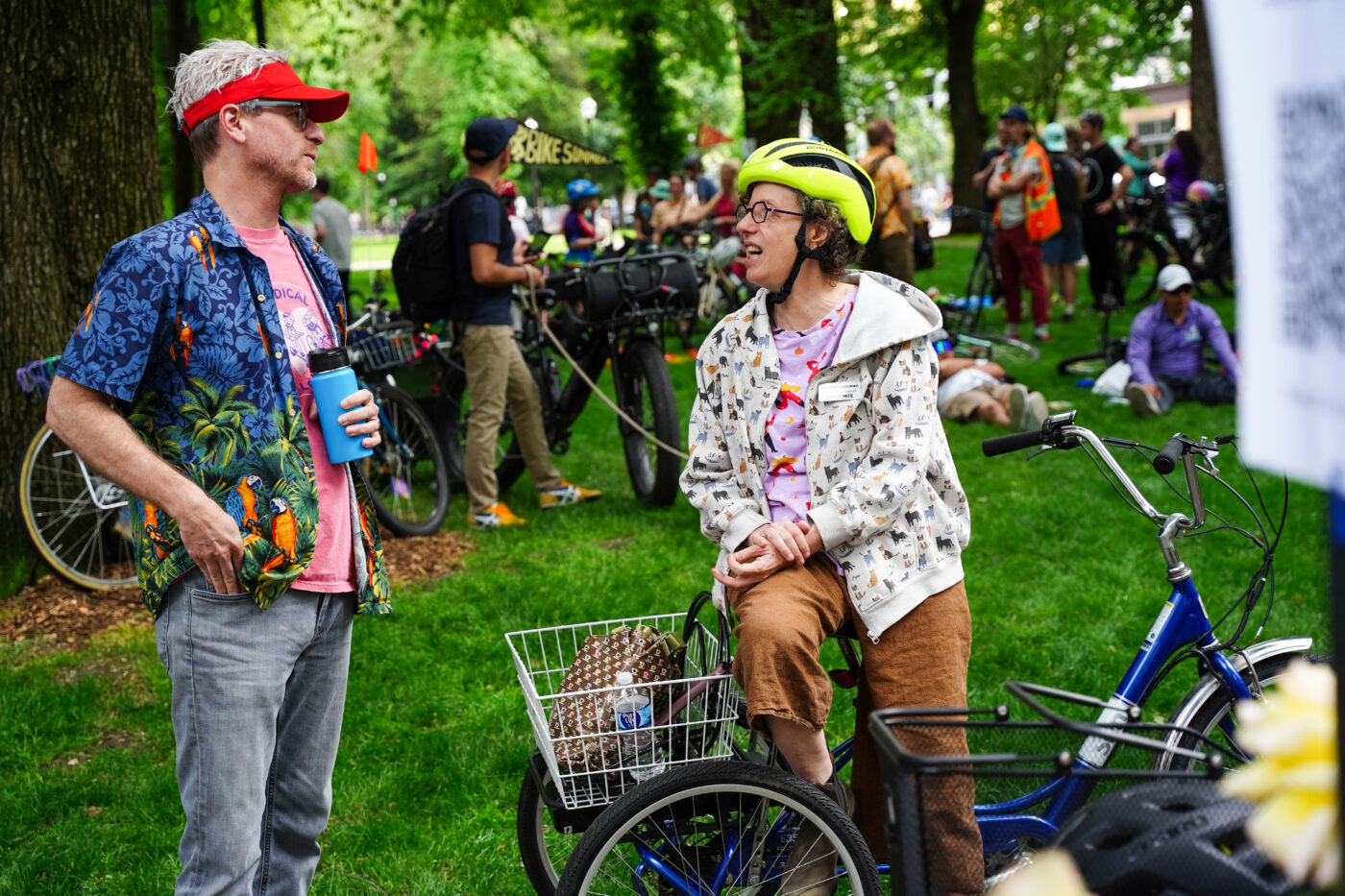
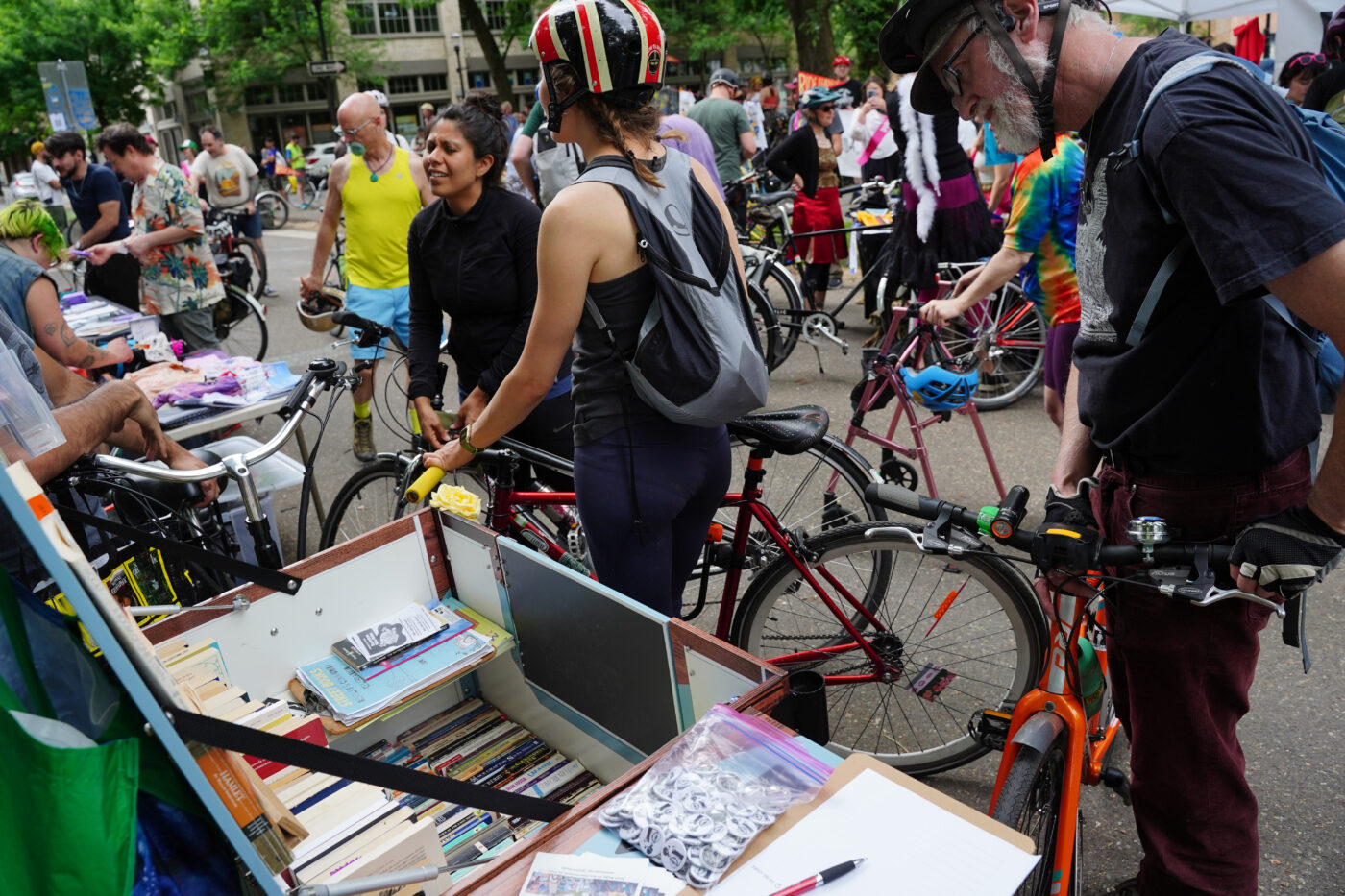
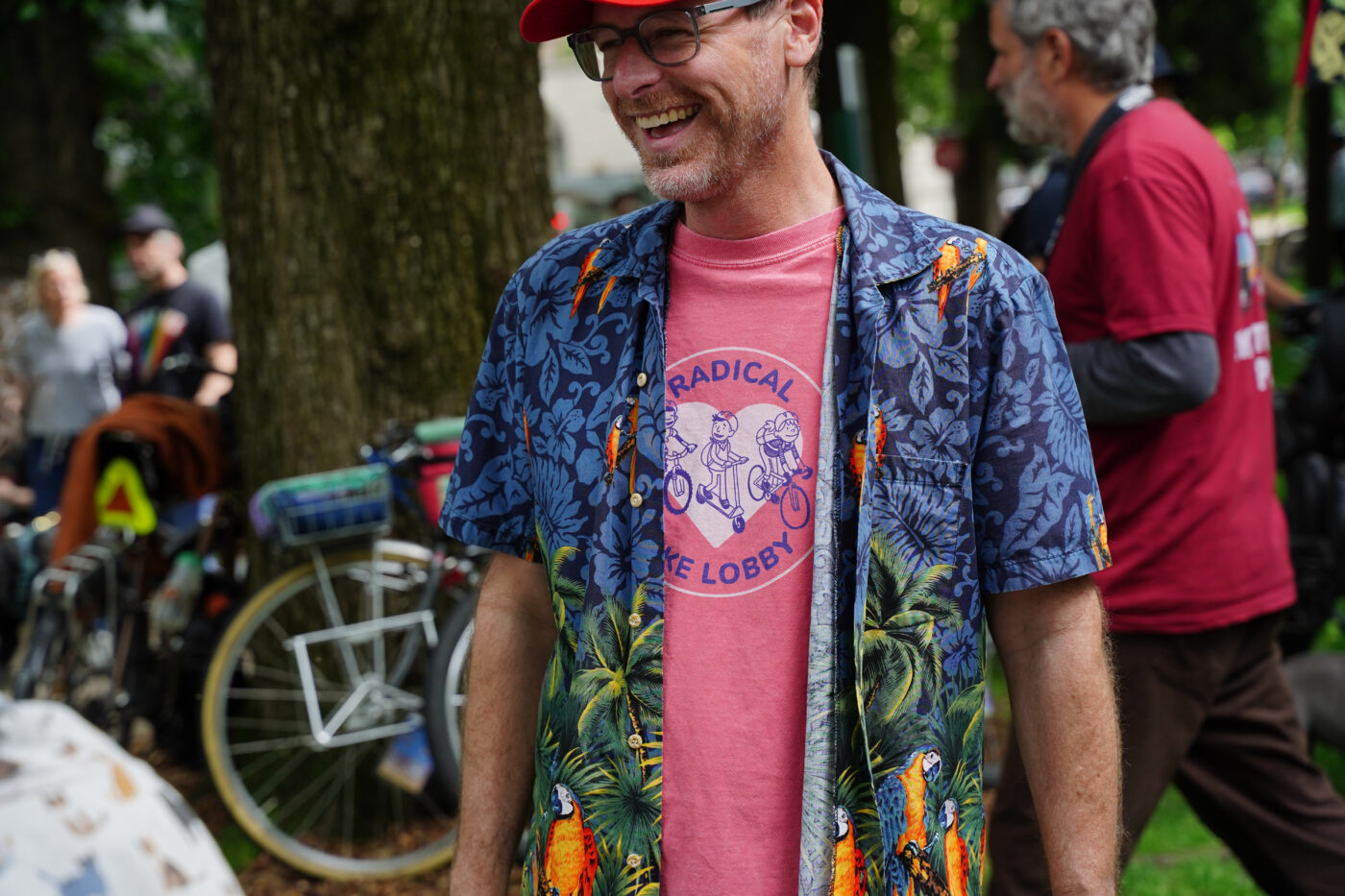


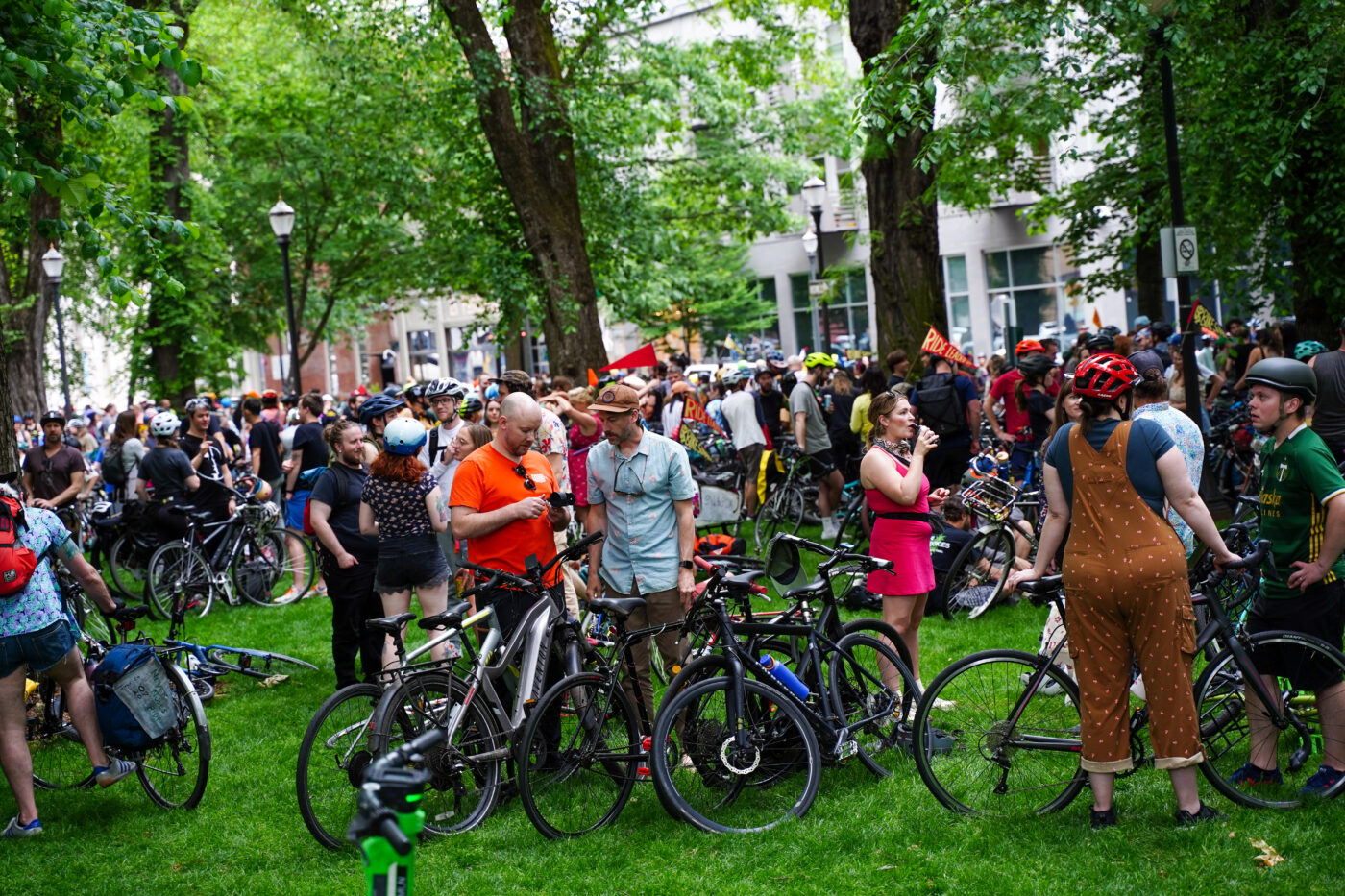





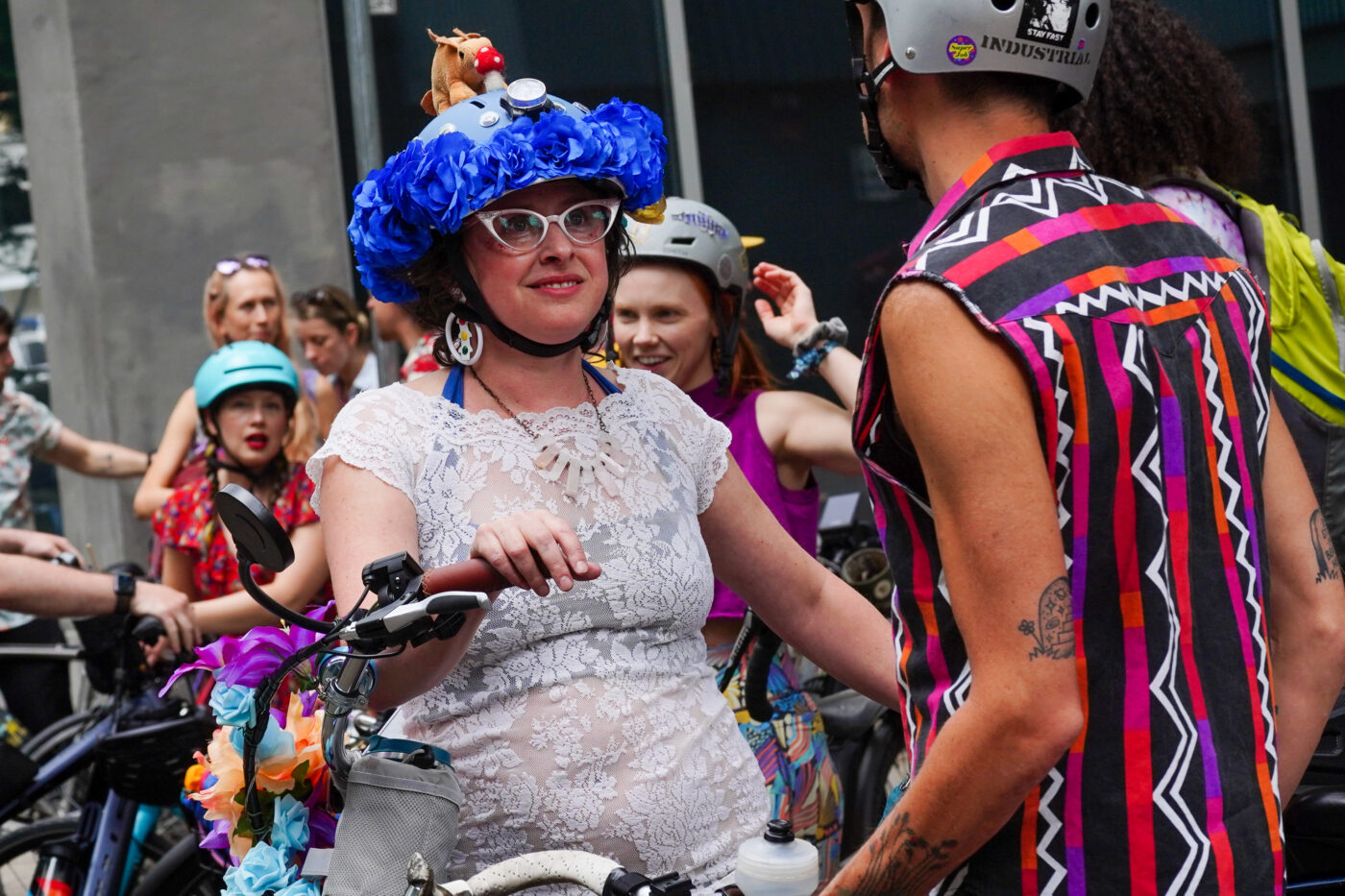
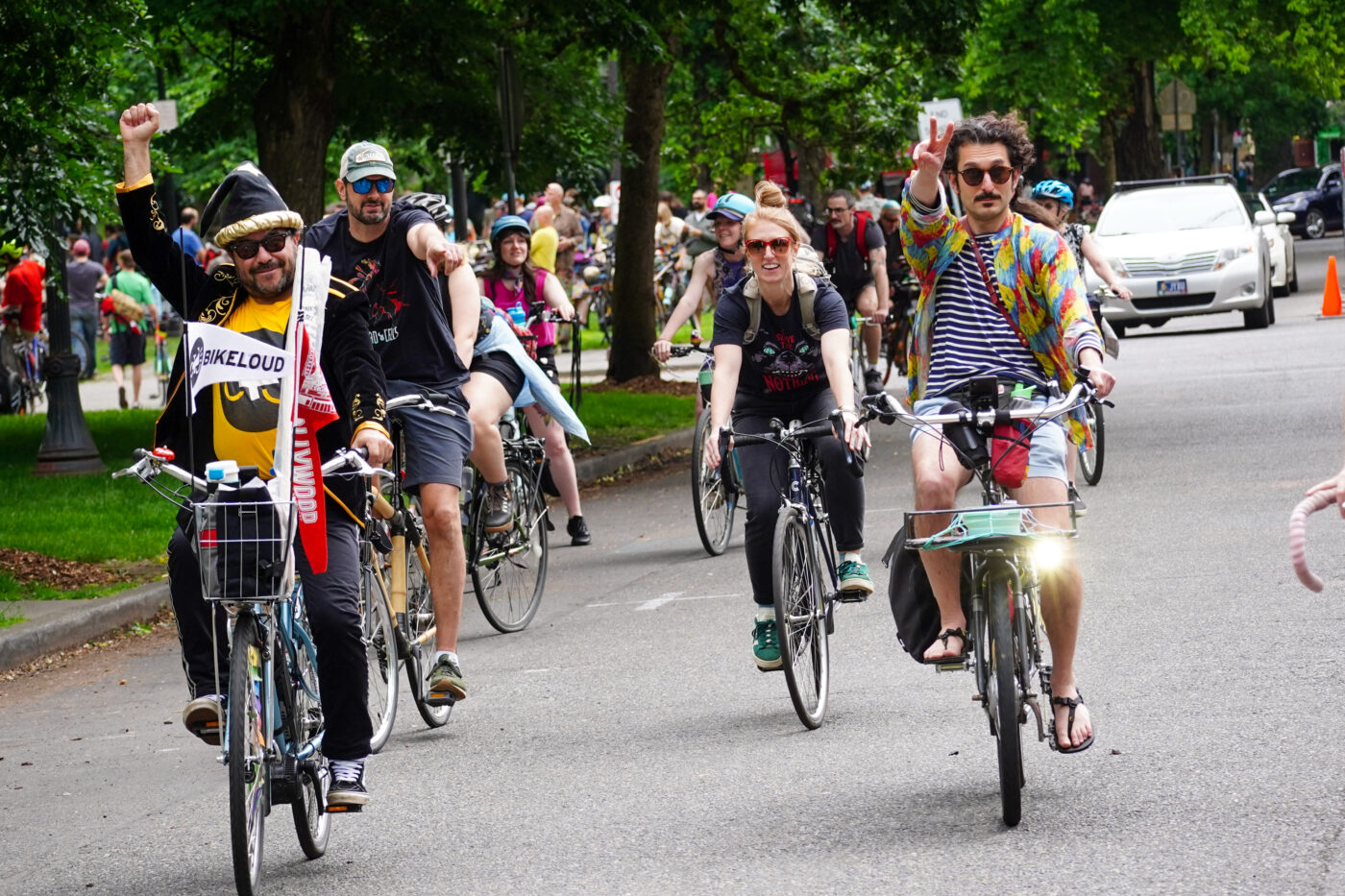
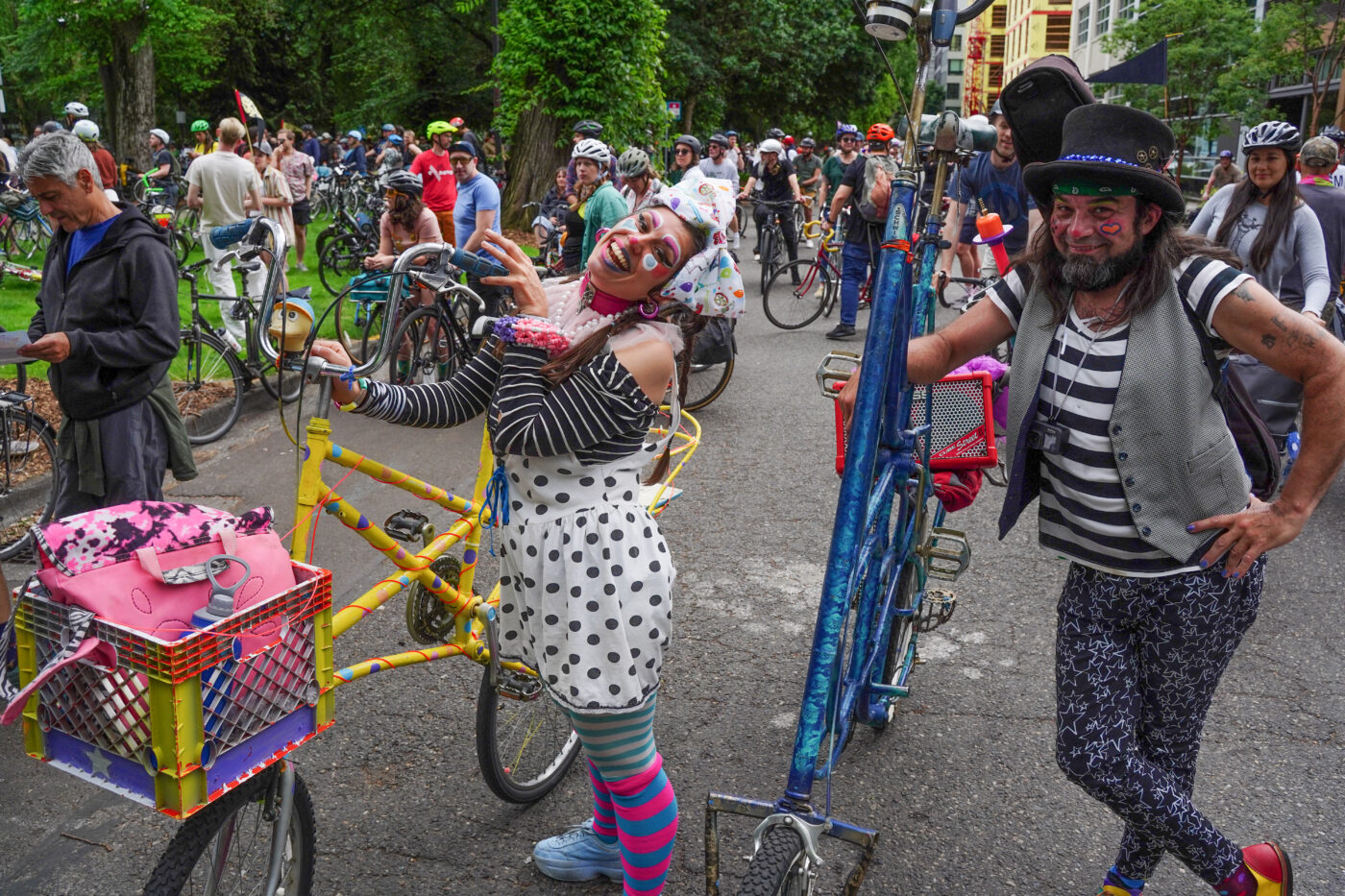
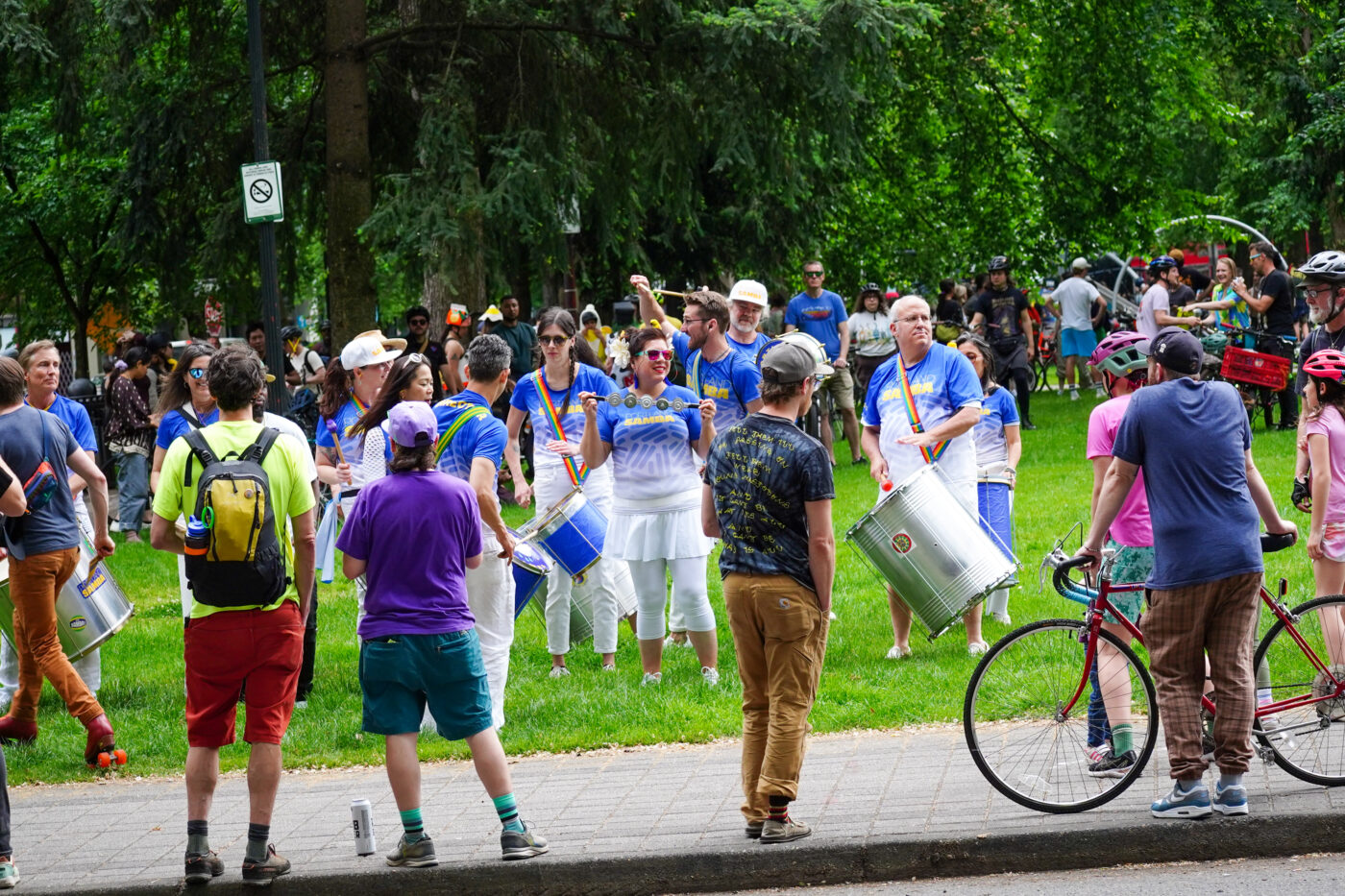

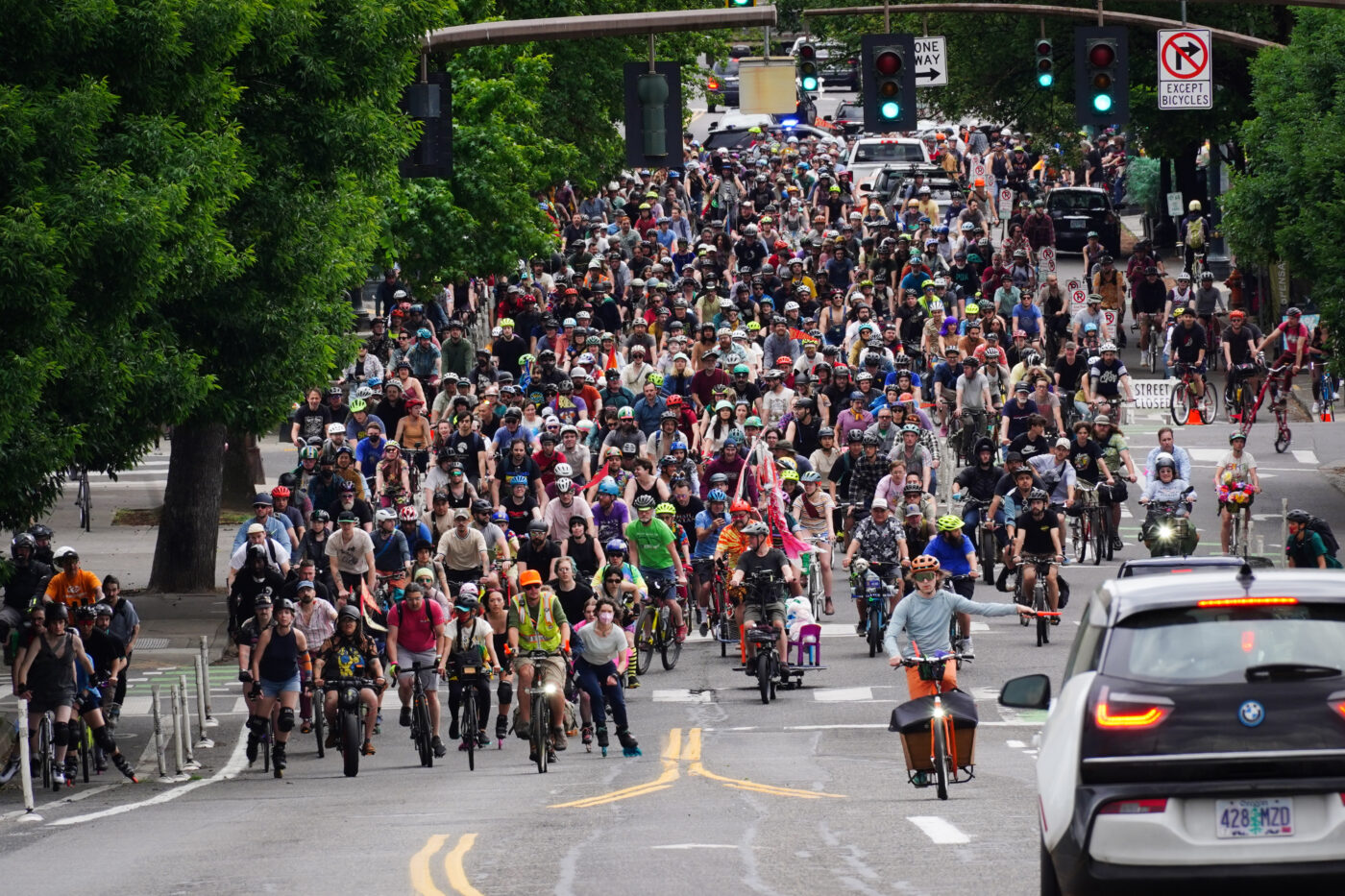




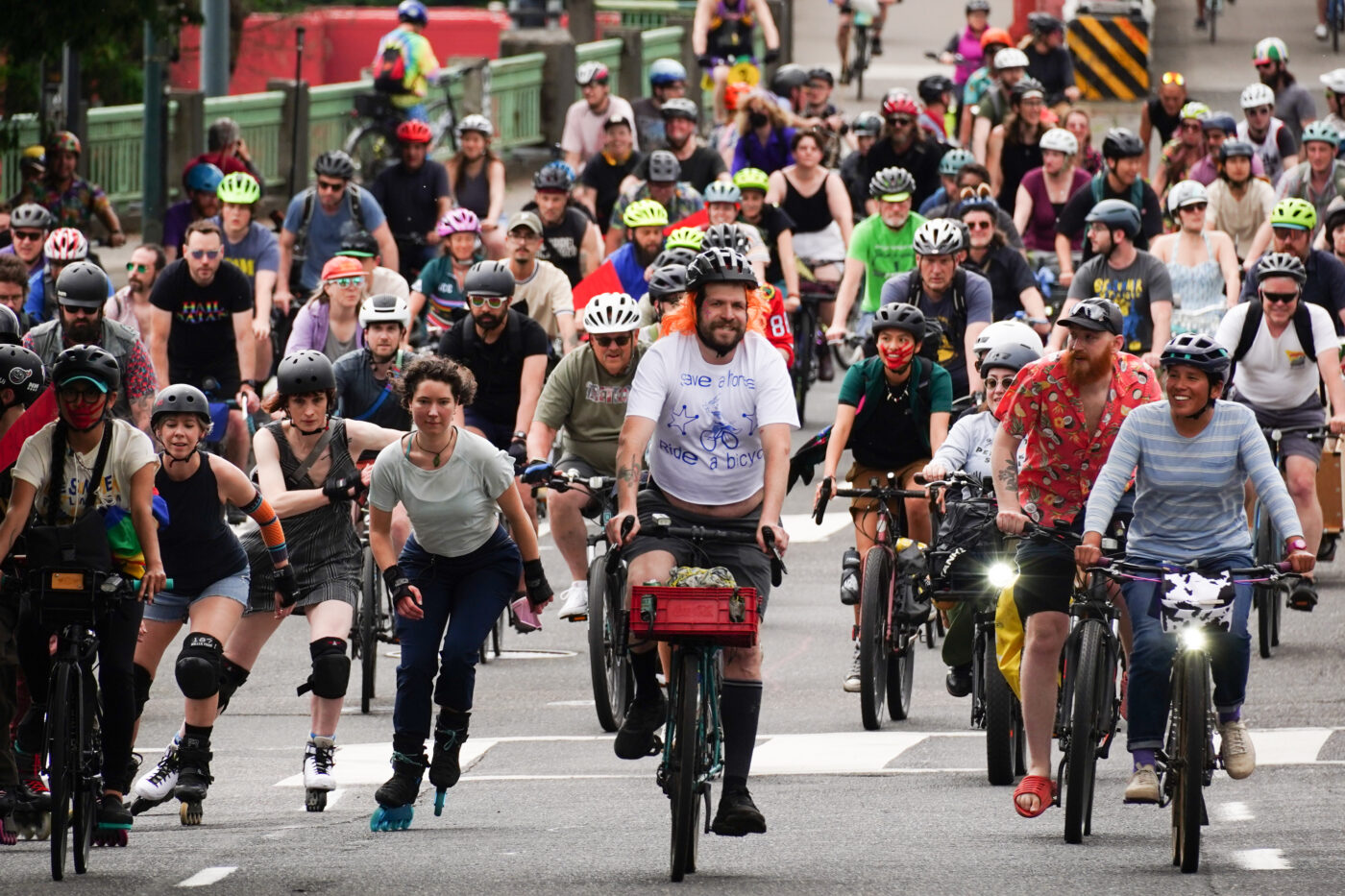


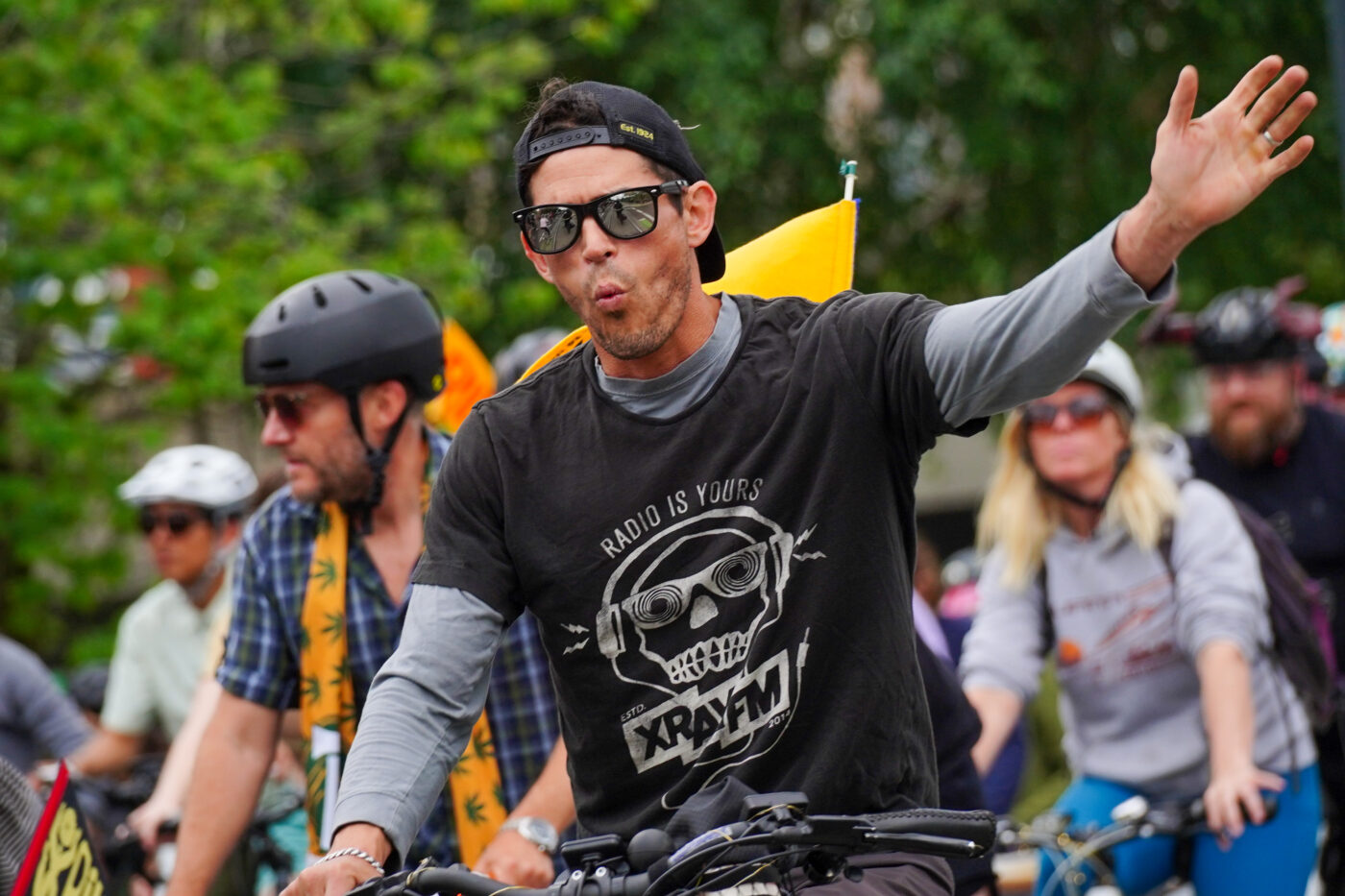


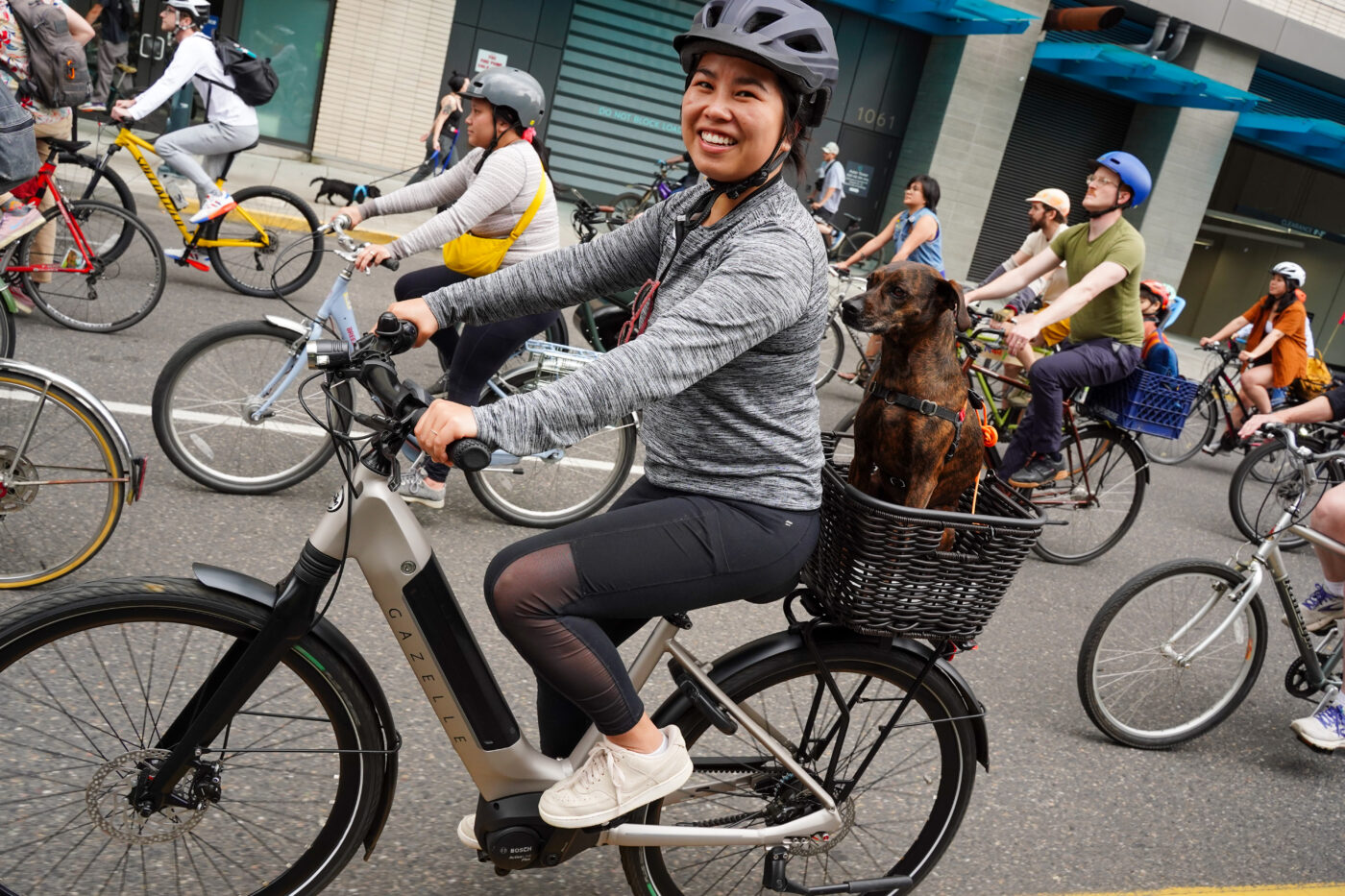



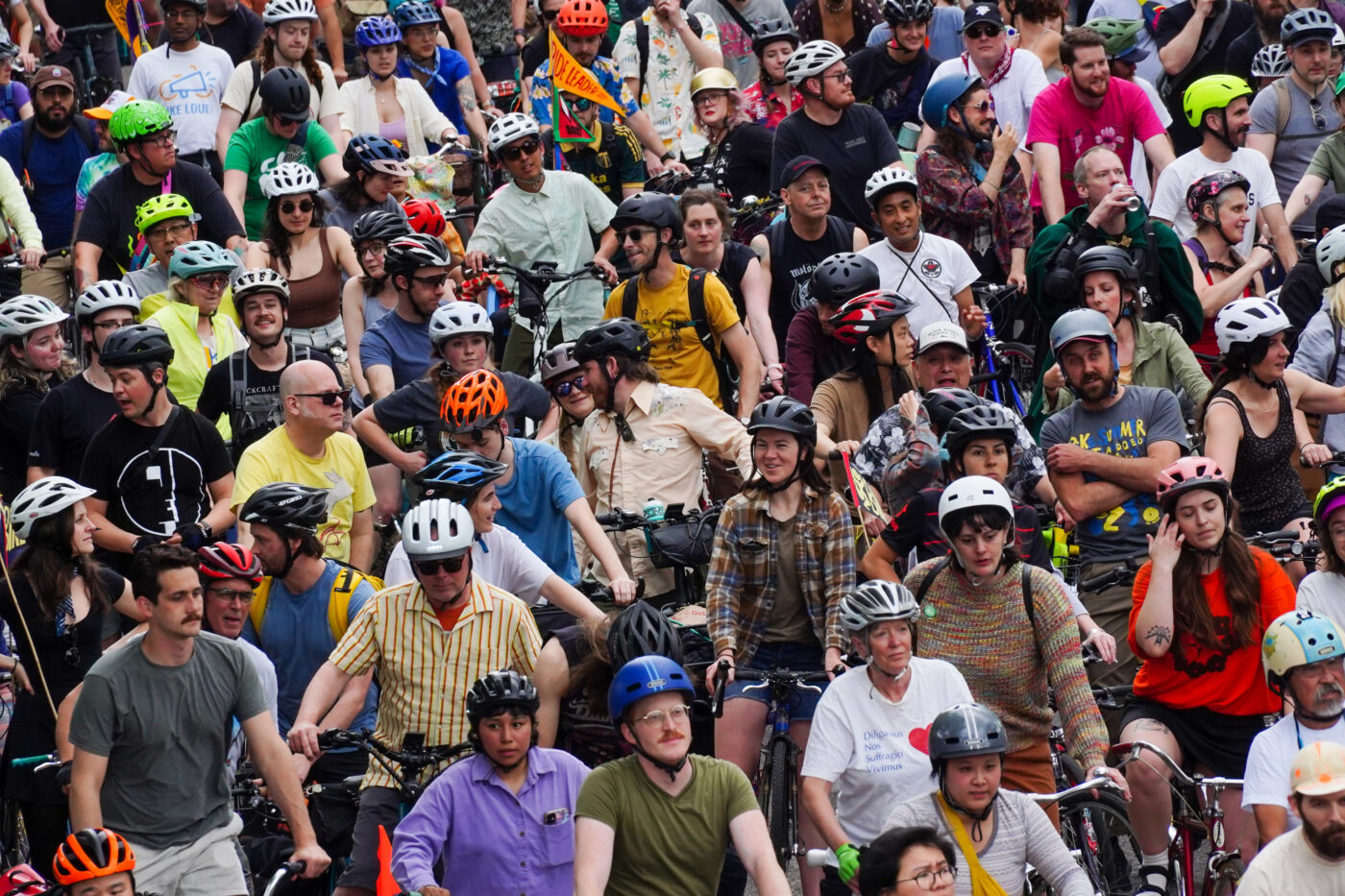
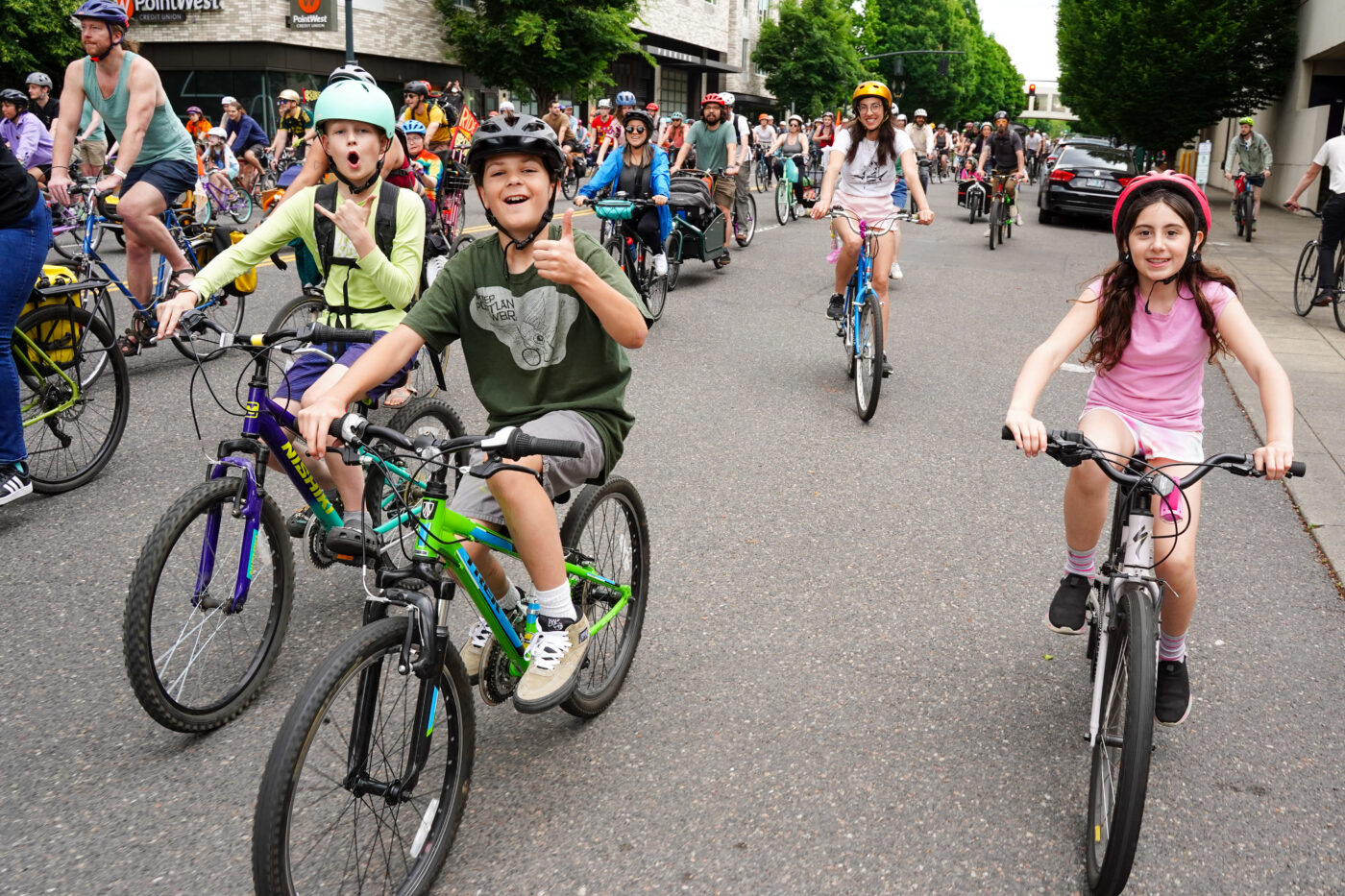
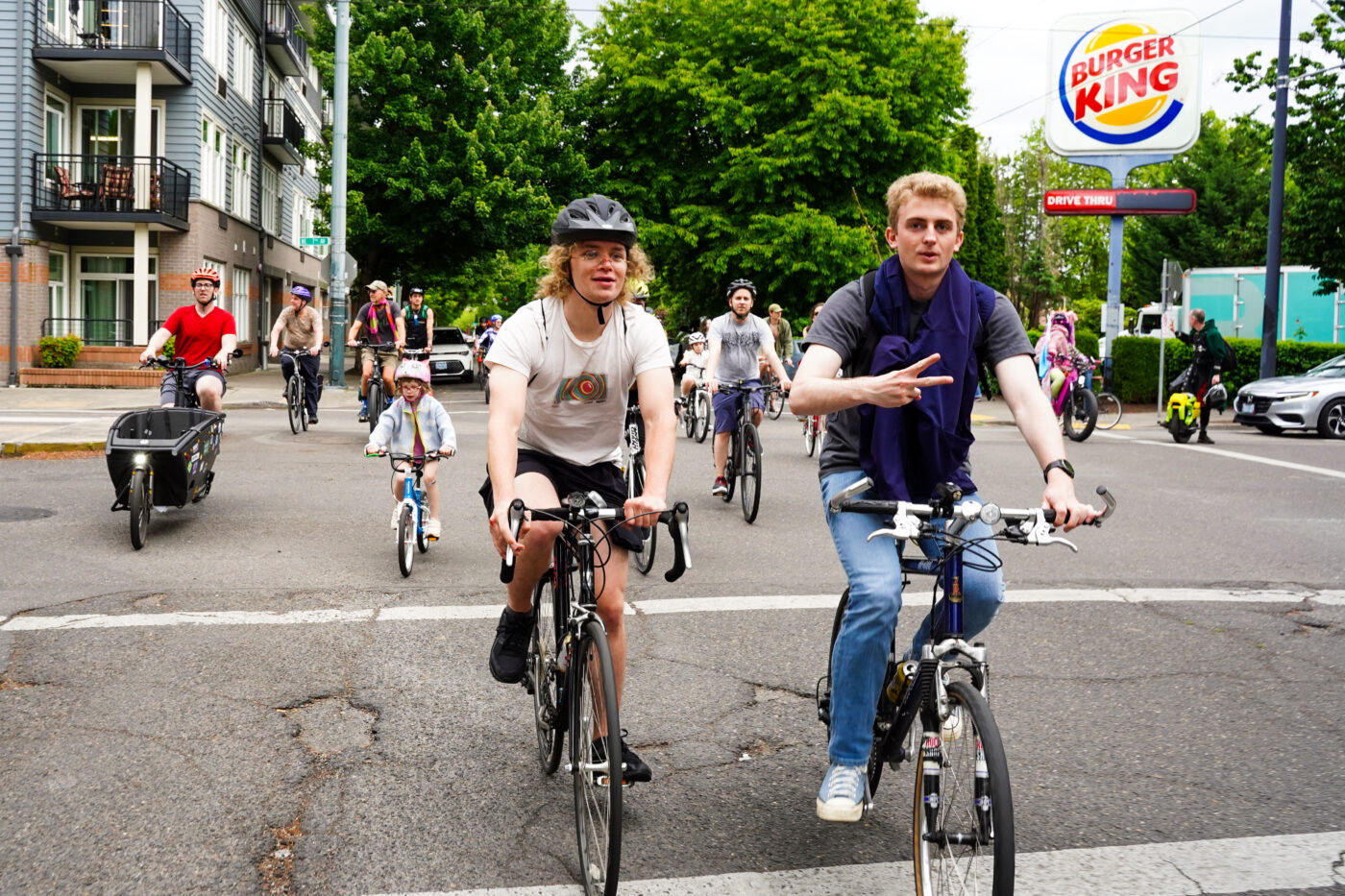

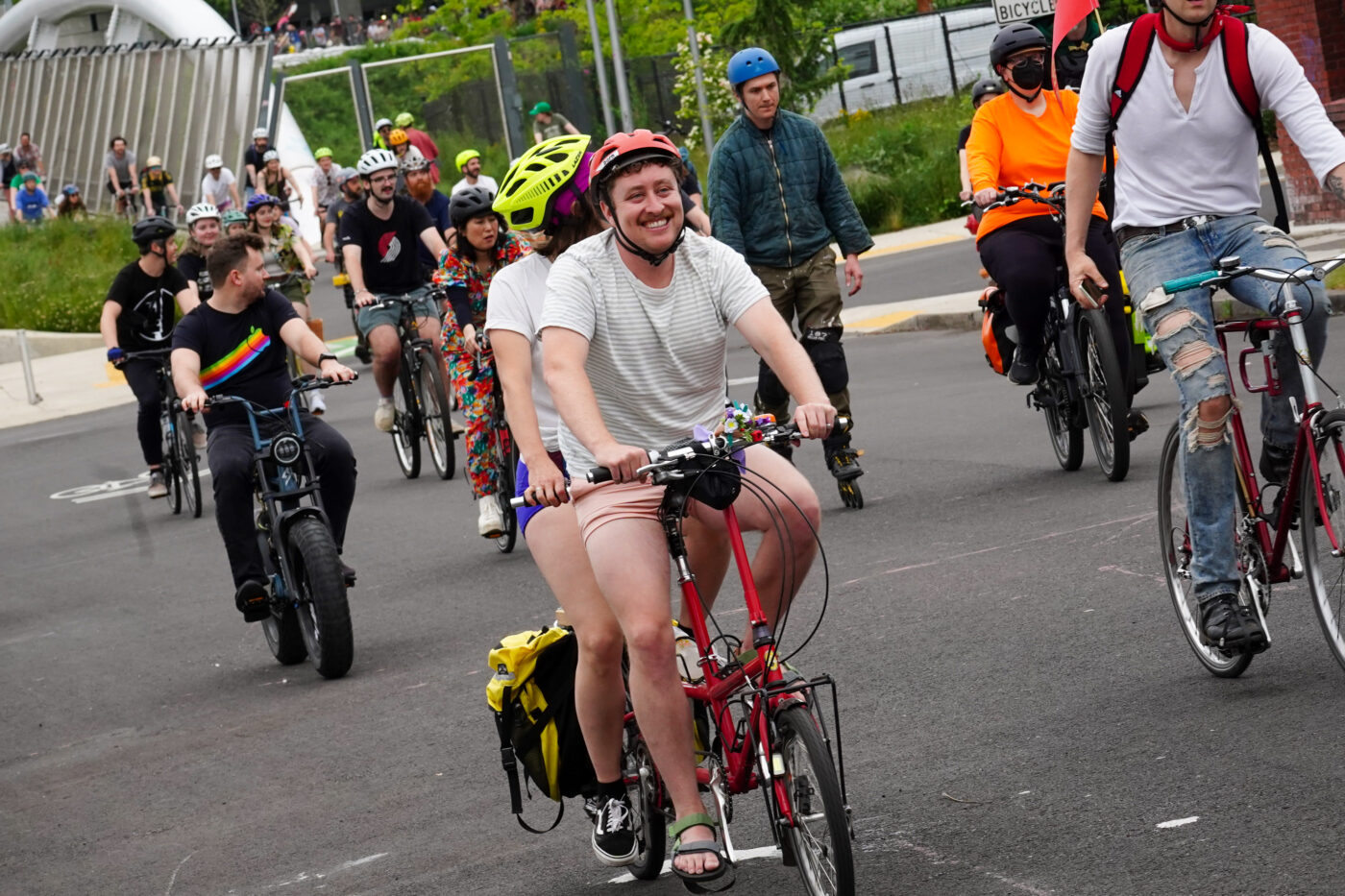


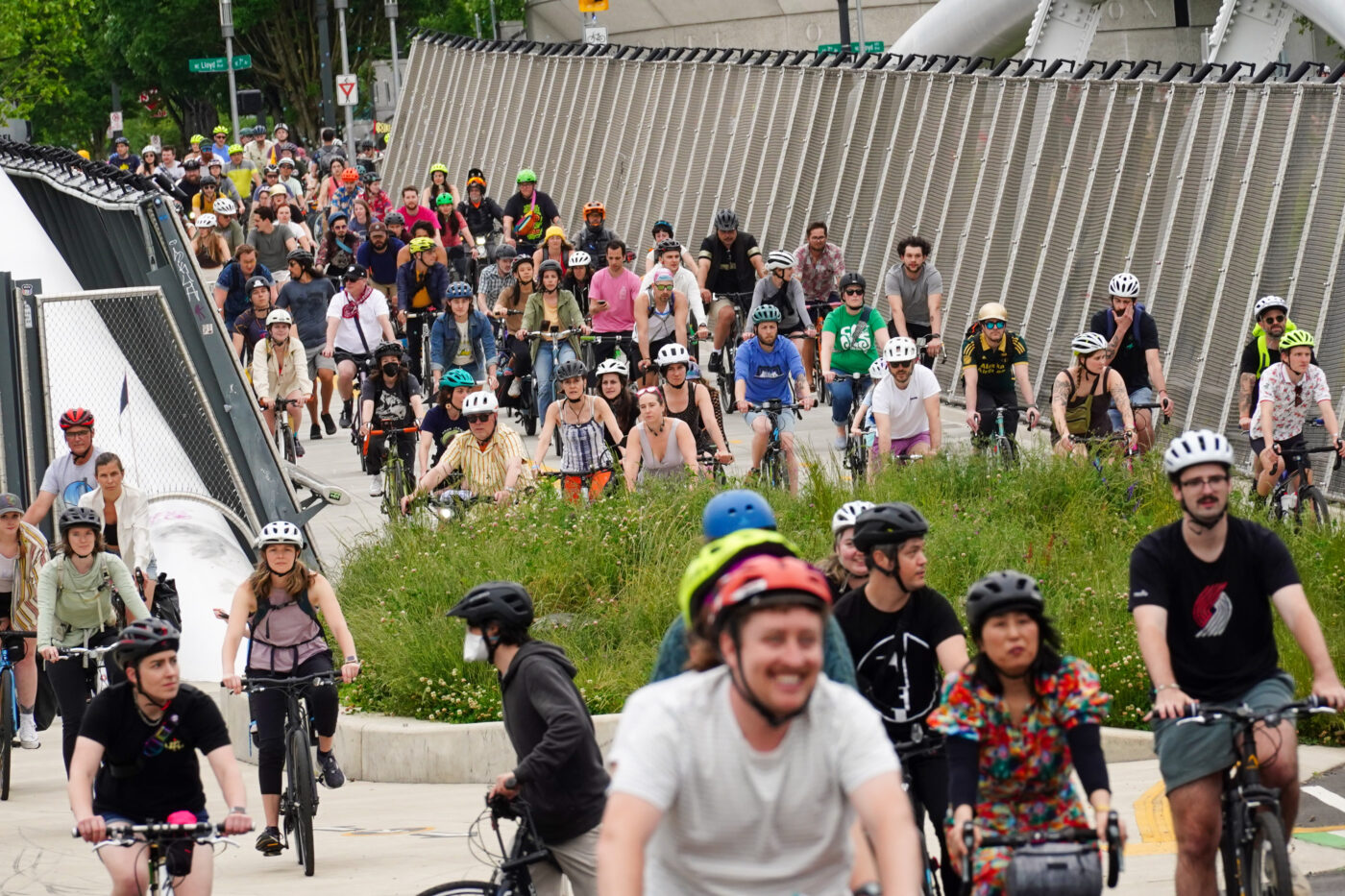





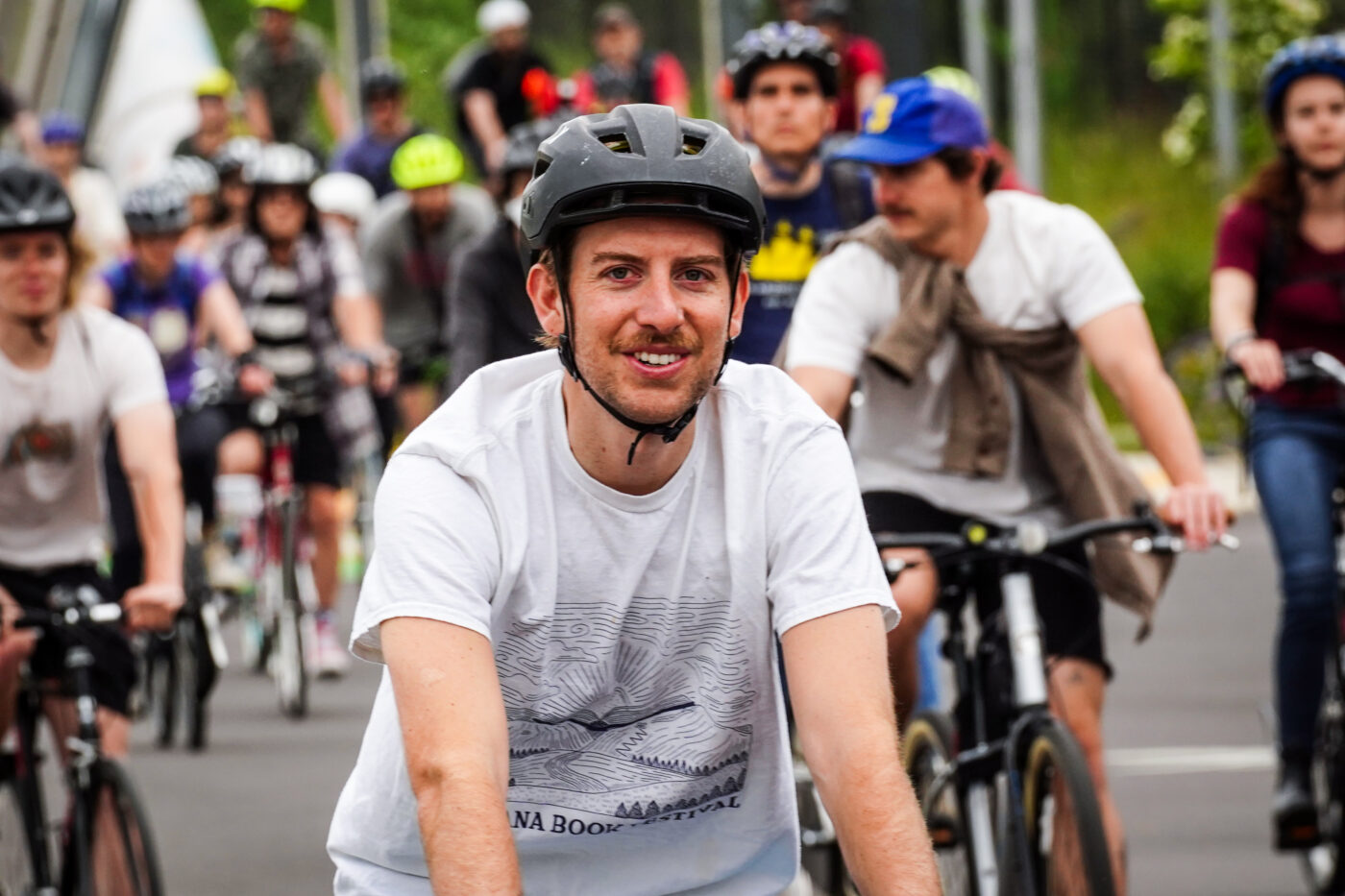




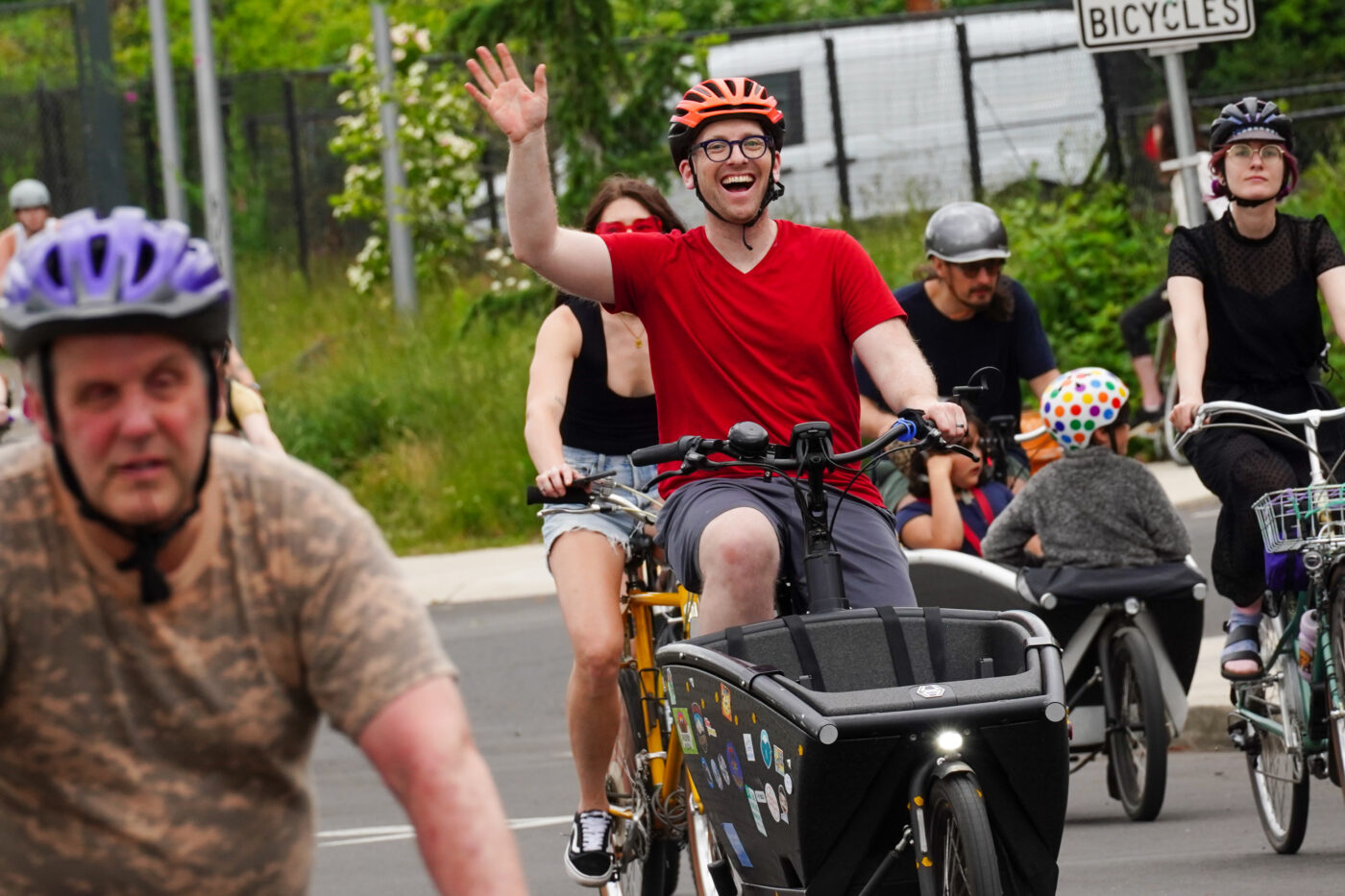



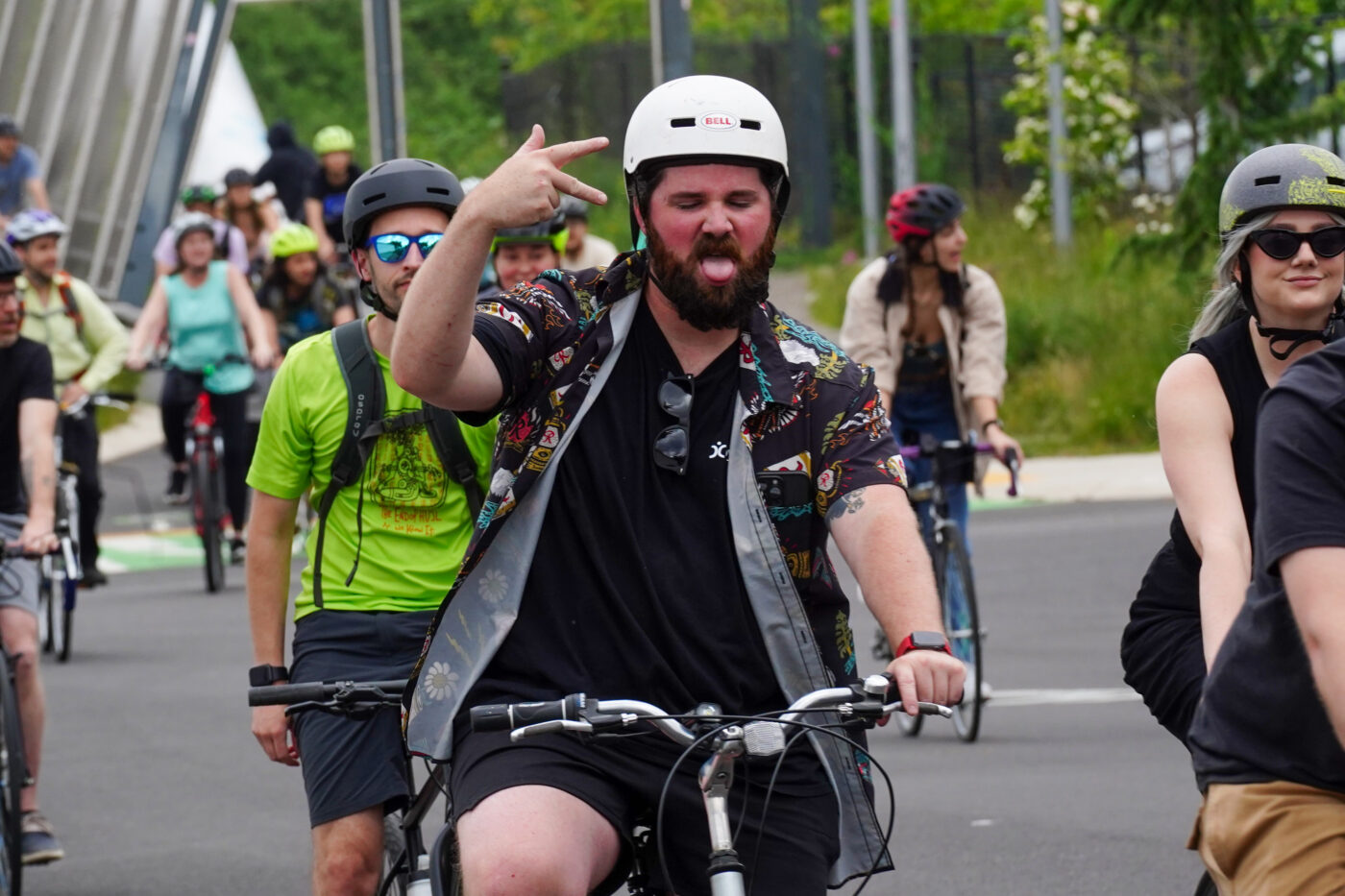

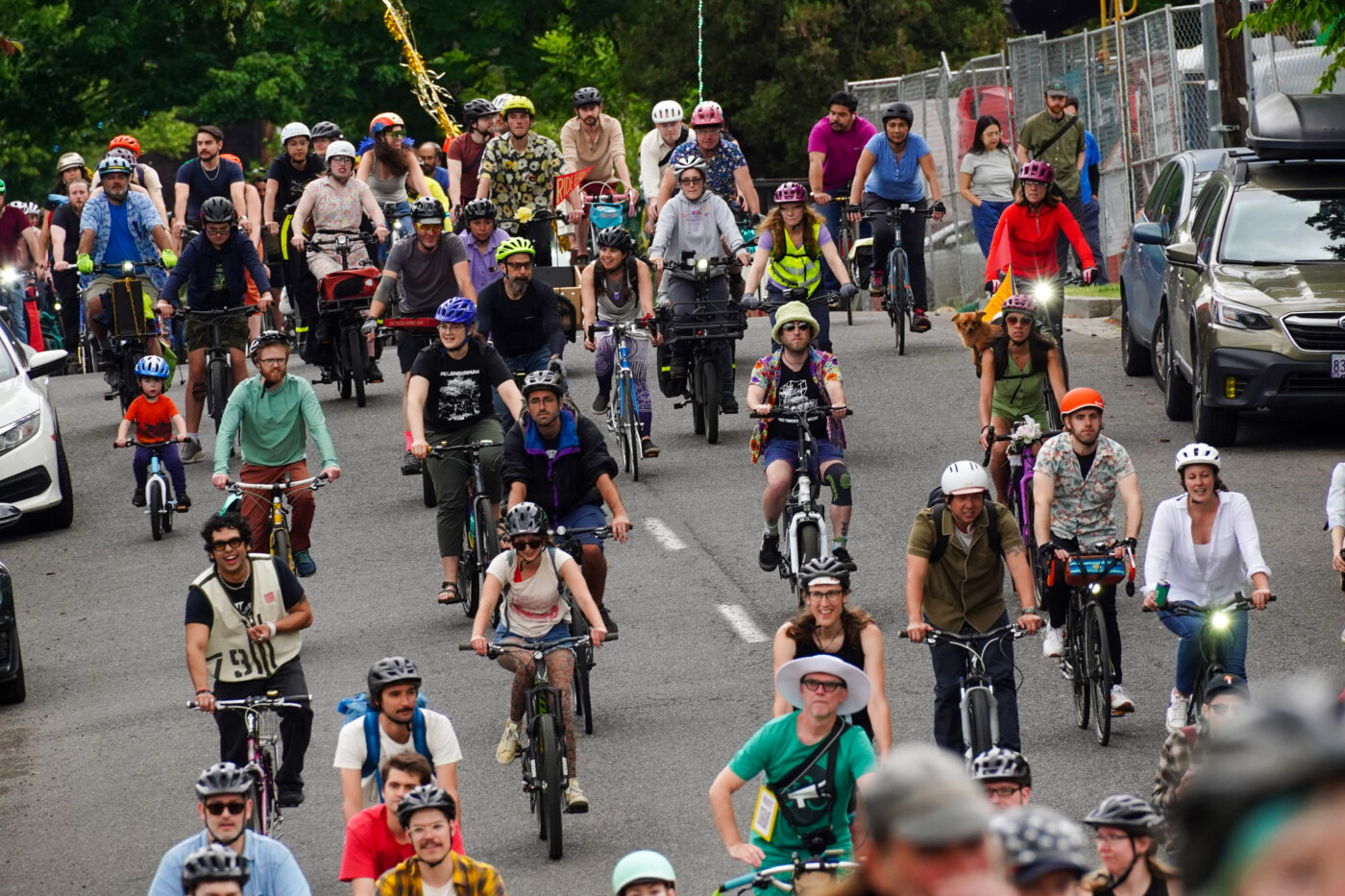
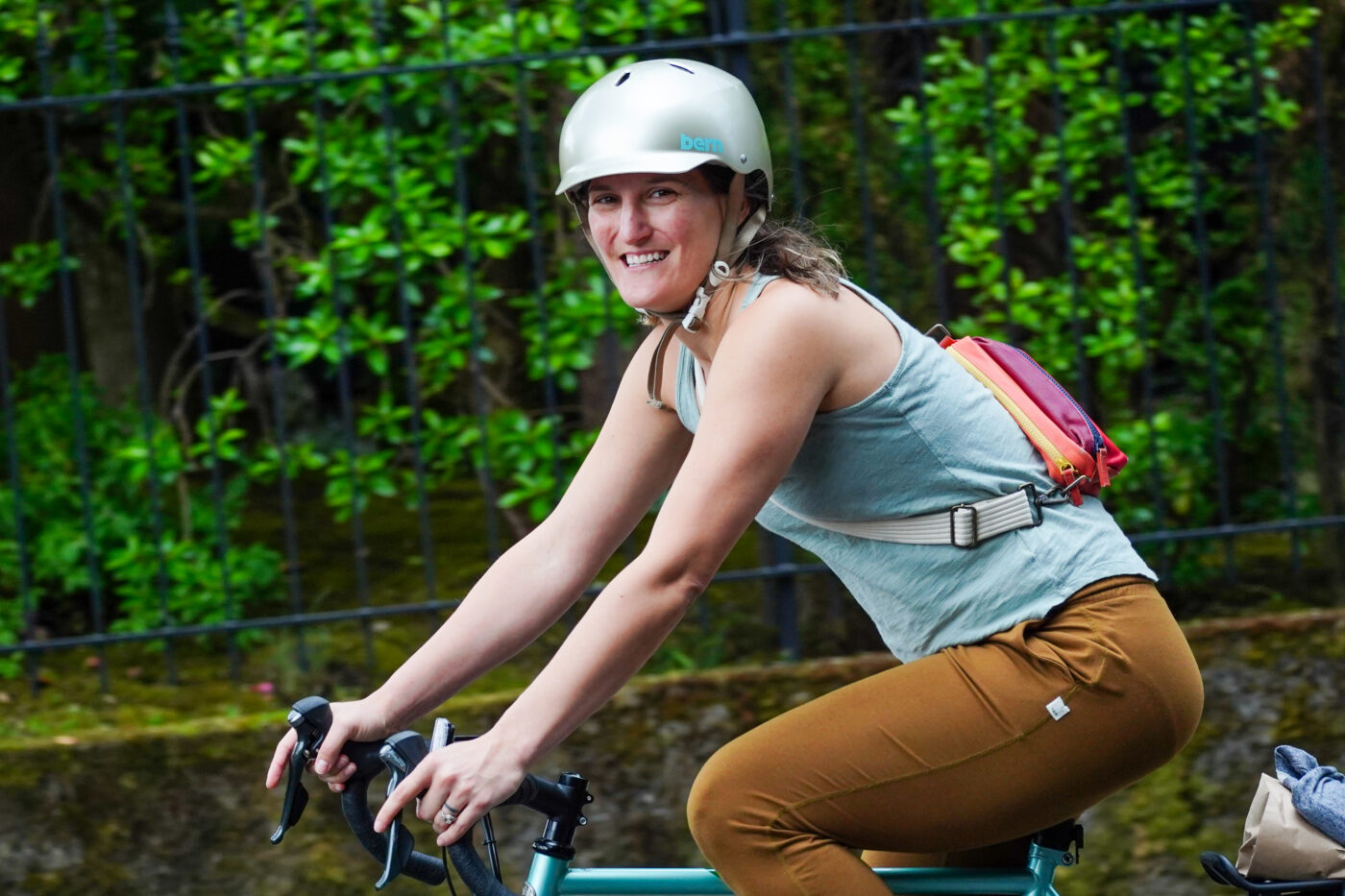





Come join the fun! It’s all on the official calendar, the official website, and the cool new Bike Fun app that puts it all on your iPhone!


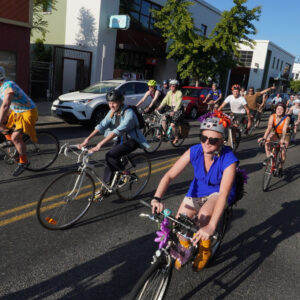
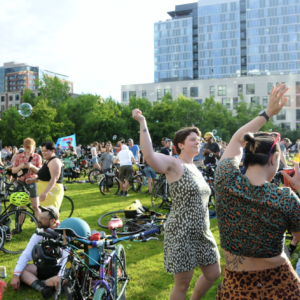
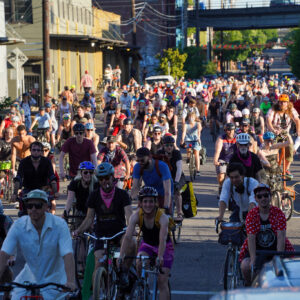
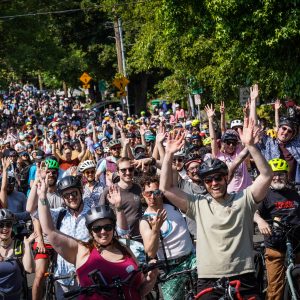
Thanks for reading.
BikePortland has served this community with independent community journalism since 2005. We rely on subscriptions from readers like you to survive. Your financial support is vital in keeping this valuable resource alive and well.
Please subscribe today to strengthen and expand our work.
YAY YAY YAY BIKE SUMMER !!!
PEDALPALOOZA2024!!!!
Yay roller blades!
And great photos, Jonathan, as always!
Was there any sort of official bike count numbers? Definitely thousands.
Yes multiple thousands for sure. I’m not aware of any official count.
Blumenaur bridge had count pressure strips down. Wonder if ODOT/PBOT could share the data from yesterday.
What’s your unofficial count?
Looks awesome, missed it this year because it conflicted with a big D&D game, but I did ride to that through the west hills. It was a perfect day for it. I ran into some pedalpalooza ride on my way home at like 10:30 on the East Bank esplanade, really wanted to join up. It was great, that late at night it seemed like the place was alive. Good vibes with the Tillicum lights and bike groups everywhere.
I look forward to more rides in the coming months!
On a… depressing note? When I was leaving my group after our game, they were practically in disbelief that I was riding my bike home, all offering rides like I was about to undertake some harrowing journey. Like, I have a damned light and I understand the concept of sunset. It’s depressing in that many suburbanites don’t even recognize cycling as a possibility. And they’re really missing out, as I was treated to such a good, alive, connected feeling on my way home just going from point A to point B. I don’t know how to get people to realize that. I guess just keep riding.
Invite them to join you next time. And/or show them statistics: most street-crash fatalities are people in cars.
Is it just D&D your group plays? Perhaps a campaign of cyberpunk or similar with bicycles/active transportation as the means to get around might cause a craving for actual cycling? Sounds like it was a fun day though.
Sounds like an opportunity to create a D & D Ride during Bike Summer! Use the city as live dungeon rooms and ride between them. Like Bike Play, but with dice!
If the numbers are so large (as they also are for the annual Bridge Pedal), why is the Portland bicycle mode share shrinking? If this all fluff, are all these people in-the-closet secret bicyclists who drive cars on their other (work) days?
Attendance at bike fun events and bike mode share has been negatively correlated since 2014. Demographic change seems like the likeliest culprit for the long-term trend.
Is this a serious question, David? Surely you know that the reason all these folks — what Tina Ricks calls the “dusty bike constituency” – don’t ride more regularly is because the system doesn’t prioritize them. They don’t feel safe. If we create conditions that make bicycling attractive, we’d see this type of crowd on a daily basis.
I don’t know this at all. I don’t even know that most of them don’t ride more regularly.
What I do know is that riding in a big group party event is very different than commuting to work in bad weather when you have other options available to you (including, perhaps, working from home).
I also know that the decline in bike ridership began in earnest when riding conditions in Portland were the best they’d ever been. I believe they still are.
Yours is a political message, but it is not based in fact.
Watts,
Are you saying, “the system doesn’t prioritize bicyclists,” is a political message? And not something based in fact?
And are you saying that good cycling conditions don’t encourage more people to ride?
I’m afraid I don’t understand the points you’re trying to make.
No, of course not. I’m saying that “non-prioritization” does not explain why (or if) the folks at the group ride do not ride regularly.
We had more ridership with less prioritization for many, many years in the past.
I disagree. It certainly does. If you are in a relationship with someone and they don’t prioritize you, do you stay in that relationship? If you are at a nice restaurant and your server doesn’t prioritize you, do you go back?
Our transportation system makes driving the easiest and most attractive mode, so the majority of people drive. Conversely, people who bike don’t feel prioritized or welcomed, so naturally they stay away and only do it when conditions are perfect or extraordinary.
Ridership does not correlate with “prioritization” (which I would measure in terms of both policy and built infrastructure).
There are other, more important factors at work.
Johnathan, I think the main issue at play here is that Portland has experienced a significant demographic change over the past decade – from younger low income people to older, higher income people. The former group was more willing to (or needed to) bike even if they didn’t feel “prioritized”, whereas the latter is either not interested in bikes at all or sees them as nothing more than a hobby.
A lot of the people who have moved to Portland also come from places with a much more pervasive car culture and would rather drive even if it causes them economic stress.
Then, to compound the issue, all of these new car commuters have made cycling even more unsafe than it already was.
Ethan, can you link to any demographic information? The last I looked, Portland is demographically a very young city. I remember there being a cliff between ages 50 and 60, a steep drop-off, people hit that age and leave. But I’m going from memory, and I don’t know how that compares with other cities.
Anecdotally, in my immediate neighborhood, people were more likely to commute by bicycle 20 years ago than today. The young ‘uns who have moved in (and I love my neighbors) grew up in Portland (nope they aren’t outsiders) and they own SUVs. My one neighbor who still bike commutes is from New Jersey. My husband bike commutes, and he’s European.
I just don’t find that the “outsiders” narrative applies to the people I know. But I have several neighbors who grew up in Portland, have parents in the area, and are perfectly happy driving around as they always have.
I’m sure it’s all just “safety”* despite steadily improving cycling infrastructure, a very low rate of cycling fatalities, and a deeply-subsidized road system that enables cheap, convenient, comfortable, and rapid driving.
The unwillingness of cycling advocates/enthusiasts to admit that driving is a great experience in this city is, IMO, a sign of an inward-looking and reality-detached subculture.
That’s a great example of how you often bend reality to fit your cherished narrative and boost your personal argument.
I’ve heard a lot of leading advocates — including myself and Roger Geller PBOT bike coordinator himself! — say quite clearly over the years that the reason Portland has fallen behind is that driving is simply too easy. You are either unaware of what people believe locally, or you have selective hearing.
Driving has not become easier in Portland as cycling rates have fallen, so “driving is too easy” is not a good answer either.
The things that makes driving attractive (point-to-point, on demand, mechanized, sheltered) are hard to replicate in a mode that doesn’t look a lot like driving.
Exactly. It’s not the “ease” of driving but rather the benefits that are not present for other modes. This is why the only way to really increase non-automobile modes is to make it more difficult and/or expensive to drive. (Even better would be to use mandates — banning driving in some areas.)
ok this exchange helps me understand that both Watts and yourself are more interested in disagreeing with me than having an open discussion. I mean, you are picking apart what you think I mean when I say “driving is easy”? Come on. It’s like you’re laser-focused on being contrary to whatever I and/or BP put out sometimes and it’s exhausting!
Do you both really think I don’t understand or consider a very expansive definition of “ease of driving” when I say that? It’s all those things! I’ve personally stated countless times on many mediums that we need to make it more difficult and expensive to drive. And that even banning driving in some areas would be fantastic.
We don’t have to agree on everything, but I find it annoying and very illuminating when some folks on here are so against agreeing with me on anything that you have to disagree with me about everything.
You made two assertions (that bike mode share is falling because it is insufficiently prioritized, and that it is falling because driving is too easy) that are contrary to the available evidence.
Why people are (or are not) riding is an important question. The honest (but unsatisfying) answer is “we don’t know.” I’ve in the past posted my personal theories, but I have no data to support them (but they are at least not contradicted by the data we do have).
I’m happy to have an “open discussion” (if that’s different than this), but not if it’s predicated on what I believe to be a false narrative.
Hi Jonathan,
What I find frustrating about this discussion, wherever it occurs, is that it consistently ignores the one study, the best piece of evidence out there, that concludes that better facilities do result in more ridership. I wrote about it when it came out, but it never gained much traction on BP: https://bikeportland.org/2021/04/05/caution-blumenauer-and-bikes-lets-talk-bidens-infrastructure-plan-329630
The PNAS study is here: https://www.pnas.org/content/118/15/e2024399118
It concludes that:
The bicycle is a low-cost means of transport linked to low risk of transmission of infectious disease. During the COVID-19 crisis, governments have therefore incentivized cycling by provisionally redistributing street space. We evaluate the impact of this new bicycle infrastructure on cycling traffic using a generalized difference in differences design. We scrape daily bicycle counts from 736 bicycle counters in 106 European cities. We combine these with data on announced and completed pop-up bike lane road work projects. Within 4 mo, an average of 11.5 km of provisional pop-up bike lanes have been built per city and the policy has increased cycling between 11 and 48% on average. We calculate that the new infrastructure will generate between $1 and $7 billion in health benefits per year if cycling habits are sticky.
The bicycle habits have been “sticky.” What has gotten worse in Portland is general lawlessness and bad driving. And an American culture that politicizes everything. That is quite a confounder.
This is true, but is at best only a partial explanation. Cycling rates started falling several years before Portlanders forgot how to drive.
Any explanation that does not account for what was happening in 2018 (best ever infrastructure, peak policy support, sane drivers, full-on office work, and plummeting ridership) is inadequate.
People were driving poorly in 2018. And SUVs had already taken over the road. And yeah, our politics were in the thick of sucking.
They were, but no worse than they were in 2010 when ridership was still going up.
When you wrote “what has gotten worse in Portland is general lawlessness and bad driving”, surely you meant post-pandemic.
Oh Watts, Obama was president in 2010, Trump in 2018. Eudaly (the person whose politics I probably agree with most on council) was incredibly, and I suspect deliberately, divisive. Yes post-pandemic things have gotten worse, but they were noticeably getting worse pre-pandemic too.
I started biking to work (14 miles round trip) in 2008. There was a river of cyclists on N Vancouver/N Williams headed to/from the Broadway bridge. After a few years my work location changed and it was made cumbersome to ride so I drove for awhile. When work changed again and I resumed riding in 2018 I wondered why ridership was so sparse. My personal theory is that many people moved out of Portland as it became more expensive. Others aged, married and had a kid or two and cycling became a greater challenge (much easier to throw a squalling kid in a warm car than to have a set up for carting them around in the rain on a bike) and those people became weekend riders. Then covid happened and downtown offices changed to WFH. More cycling enthusiasts moved away. Infrastructure improvements slowed way down. The worst thing was as things have recovered more drivers have moved here from places with different and reckless driving habits and the courtesy and care offered to cyclists previously has dwindled to a drip. There are people out there in cars who literally hate us and think we should take our toys and stay on the sidewalks; we are IN THEIR WAY and SLOWING THEM DOWN. Some people are deliberately mean and dangerous; others are inattentive, distracted and don’t know/don’t care about the rules of the road. I totally understand why people on bikes don’t feel safe anymore and I am so very grateful that my work location has again changed for the better so that my route to/from work is on mostly neighborhood streets and greenways for the 10 mile RT. I still have fear and ride defensively and presume that people don’t see or care about me as a fellow person. Many drivers are still kind but you never really know when you are encountering someone who sees you as a gnat that shouldn’t be there.
Thank you for taking the time to write such an a nice, long, informative comment. I agree with you completely. I’m going to add a little.
PBOT does not have the resources or personnel to do statistics or analytics on the data they collect. TriMet and ODOT do, and those bureaus have interesting research reports about road vulnerability and also usage.
In particular, TriMet did an analysis of why bus ridership had dropped so much in inner northeast Portland, and their conclusions jibe with your observations. For the dweebs, and IIRC (and I can’t find the original analysis they presented at a conference), TriMet fed a bunch of data into an ANOVA statistical analysis and the only correlation they found with decreasing bus ridership was gentrification.
(Later, they further analyzed and wrote up this report: https://transitcenter.org/in-portland-economic-displacement-may-be-a-driver-of-transit-ridership-loss/)
So yeah, people who rode the bus (and I’m hypothesizing road a bike — and those may have have been different sets of people) left the neighborhood because they could no longer afford to live there.
My husband and I spent several months in Paris during covid, and he posted about his daily bike commute on BP. I was there with him too, and I can tell you that there is a hugely different social dynamic at play on the streets of Paris and Portland.
It may ruffle your feathers, but Watts and others contrarian takes are literally the value of this comment section. You admit to not being objective about the content here, so it is always interesting to see well thought out arguments to the other side. I only clicked this article because I saw it had 34 comments at the time, so I knew there would be some juice to enjoy.
Hi PS. I love contrarian takes! That’s not what I’m talking about here. I’m just trying to understand more about why these two specific commenters seem to be contrary toward me for no other reason than to disagree.
If our best ideas are simply to make transportation for most people more expensive (in time, money, effort, and hassle), then they will be difficult to implement politically (and may not provide a net social benefit).
If we can reduce the negative social costs of car use without losing their benefits, we may be better off than if we simply focus on making life more difficult for those for whom alternatives don’t work so well. Cost reduction is starting to look more possible with electrification and the promise of automation.
Well, not in money. Just about nothing is more expensive than driving. Individually and collectively.
Collectively because of the cumulative negative social costs I mentioned (which we are in the process of reducing).
On an individual level, it depends who you are and how/what you measure. For me, driving is quite cheap compared to any similarly performing alternative, with the exception of trips long enough that flying starts to make sense, and a few other specific exceptions (Seattle, for example, depending on the particulars). A trip to Hollywood by bus is $5 round trip. By car it’s too cheap to think about, and I go and return when I want, staying dry the whole way. It’s also about 5x faster.*
Your situation may differ.
*Of course, I’m going to ride my bike, but I’m in a pretty tiny minority.
Attributing autonormitivity only to relative ease of use is such an absolute cop out. Driving is certainly “easy” (e.g. less physically taxing, less exposed to the elements, and more comfortable) but it’s also more rapid, more flexible (long and short distances), more carrying capacity, and far, far more culturally accepted. It’s the dominant transportation mode because no other mode offers these advantages.
.
Any one who wants to see increased mode share for transportation alternatives but does not see themselves as an opponent of driving and/or does not support punitive anti-driver policy is in complete denial.
I see those attributes clearly, I am not an opponent of driving, I don’t support punitive anti-driver policies, and I am not in denial.
Cars are “bad” because of their high costs. If those costs can be lowered, their degree of “badness” will fall too, and then maybe, at some point, we can end the cultural (and futile) “war on cars”.
Yes, JM, it is a serious question. My “pleasantly mediocre” city of Greensboro NC, like many other medium-sized cities in the USA, will not gain any traction on much-needed bike safety infrastructure unless everyone’s often-cited darling cute white poster child of Portland Oregon can overcome its steady decline in bike mode share.
I think it’s a good indicator of how many people want to ride their bike. They clearly have a bike, are paying attention enough to know the event is happening, and come out in numbers. But something keeps them from riding daily.
I mean, some of it might be the answer to “where would they be riding to”. This event is everyone in the city converging to one place. Nobody does that daily – downtown isn’t a destination for work or school – so you just don’t see a huge stream of people crowding in. Bike Buses, growing in popularity, are the alternative – smaller groups going to dispersed parts of town. So you don’t see the huge crowds.
Then there’s work from home. Not a huge part, but that was definitely some of the people who used to commute downtown.
I bet there is also a good number of riders in events like this who work somewhere like Nike or Intel. They commute every day but there is no (non-ambitious) riding route to those places, especially with our slow transit options.
And then there’s what Jonathan suggested – prioritization, safety, etc. Probably a big part. You could say, with a “critical mass” of riders, you can feel safe anywhere and so these big rides attract more people.
Clearly there is an inclination by these particular current Portland cyclists to want to ride with like-minded bicyclists, so why not promote programs to encourage such behavior on a more regular and ongoing basis?
Since the Bike Bus movement is so successful in getting kids to ride to school more, maybe Portlanders ought to change tactics and instead of relying on expensive new infrastructure which may never get built, run “bike-work buses” to get residents to their places of work?
I think it’s true people like riding with others, so your idea to focus on that for transportation cycling could have some merit.
On the other hand, I think it’s also true that people like events that allow them to ride in places where they may not feel safe outside an event, such as much of the route of this weekend’s ride.
Another place I see it regularly in in the Central Eastside on Sundays. During the week, it’s a poor place to ride, with trucks, industry, etc. On weekends the streets are almost empty, except for people walking, biking and using scooters to enjoy the area–and not because there’s a cycling event, since there isn’t. But riding is safer there then.
So people are biking in those places when they feel safer. That could be an argument FOR continuing to make infrastructure improvements, so transportation riding during the week feels safe then, too. I do realize there are also people who ride for fun on weekends that won’t ride for transportation during the week even if safety is improved.
Let’s pretend that Portland’s newly elected city council really wants to achieve a 25% bike mode share by 2030 in Portland, for commuter trips. To do it, it needs at least that number of residents to own a bicycle or to have access to a bicycle (a friend’s, a relative’s, a Biketown share bike, etc.), especially among the “interested but concerned” 25%, which probably already has been achieved. They also need a safe place to store their bike at home and at work (or near work), so a police crackdown on bike theft in likely needed plus community bike parking services likely subsidized by the city, even in low density residential areas. Clearly many residents want to ride, evidenced by this event, the Sunday Parkways, and the Bridge Pedal, but they need encouragement and maybe even bribes and incentives. To crack down on dangerous car/SUV driving, the city not only needs the draconian police enforcement that St. Paul MN did several years ago, but also add many diverters citywide to create the zones that Gand/Ghent/Ghaunt in Belgium did recently, to make it harder to drive, and to force a citywide parking permit program even for the suburban parts of Portland, to get more cars off the street and make car ownership more onerous (and raise more city revenue to boot.) But to get people to ride more, particularly when weather is yukky, is going to take the city and its advocates a lot of effort on running bike buses (and even getting Trimet to put bigger racks on buses and allowing bikes inside.) The payoff for the city? Less street maintenance and lower costs, less need to rebuild stroads, fewer serious crashes and fatalities, and rising standards of living for residents.
Bike buses eliminate several of the big advantages of cycling: the ability to go where and when you want, and to set your own pace. If people value “safety/fun in numbers” higher than these other attributes, it might work.
It might work better for schools because there is a captive audience that already has no control over the where and when.
Freeways (and even more so tollways) are in essence car-buses in that users are highly restricted on access of entry and exit. To a certain extent most adult Americans are already used to having their freedom of movement restricted in-mass, to not be able to go where and when they want, at least for a period of convenience and speed.
David, you’ve probably seen this–exactly what you suggested:
https://bikeportland.org/2024/06/03/city-of-portland-employees-have-started-a-bike-bus-of-their-own-387041
Now we just need to get other significant employers to do the same – hospitals, school district staff and teachers, other city agencies, the county, Metro, Adidas, Precision Cast Parts, Port of Portland, & Trimet. I remember in the late 90s the city sponsored a competition for different size companies and agencies (by number of employees) to get them to bike more, part of the long process of getting to that legendary 7% mode share the city had once upon a time.
I was disappointed to see how many folks were loading their bikes up on car racks when we got to Laurelhurst park.
Here in Greensboro NC, as in many other communities, we have a Tuesday evening community ride series called Easy Rider with 15-30 participants, all of whom sign a waiver and wear helmets, roughly 50/50 men and women, lots of older riders but some kids too. We ride at a very slow pace (8-10 mph) to encourage conversations and good will and have lots of stops to allow slower riders to catch up, with both a ride leader and sweep, with corkers when needed. The purpose of the ride is to help beginner cyclists get used to riding in traffic, which is extremely scary for most car drivers. Some participants ride to and from their homes, but most participants drive to the ride start/finish. They park their cars and unload (and later reload) their bikes. So to be successful on such rides, we have to start and finish at a location where car drivers feel safe to park their cars for a couple hours (in our case at a popular local bike shop). This is one of the facets of living in a car-dominated community like Greensboro – it’s unfortunate but is a fact of living in such a community – and women in our community are far more likely to drive to events than men. We want more people to bike on city streets, to be safer drivers, and this is one way we try to do it here in our community.
(The Thursday ride is much faster, has more boisterous members, and frequently breaks the law by running red lights.)
Cute – love all the color, costumes and joy exuding through the photos.
That chrome cruiser though… wow!